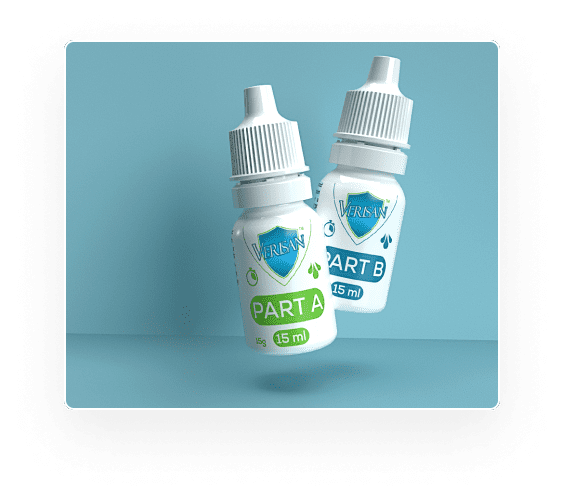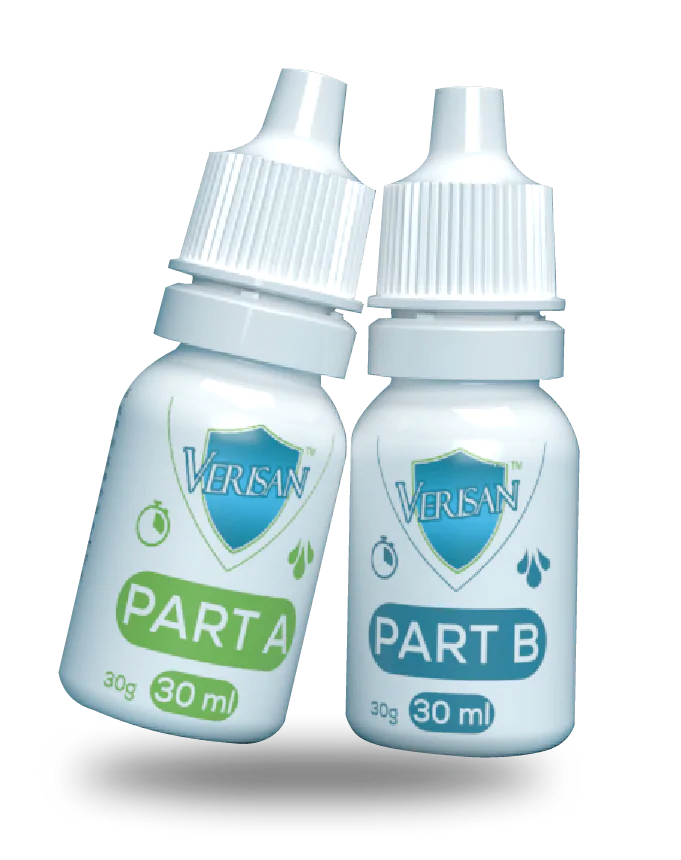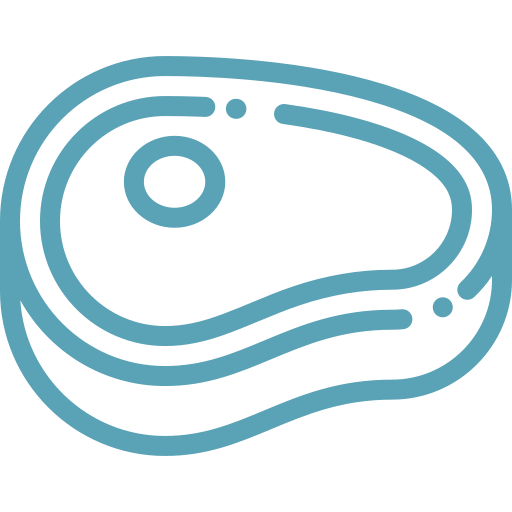Decontaminate, Disinfect, Deodorize, Or Sanitize Public Restrooms And Bathrooms
Sanitize public restrooms and bathrooms need to be kept at the highest…
Welcome to the world where Innovation affordability & effectiveness meet hygiene
VeriSan™ is a natural, and cost-effective alternative that replaces dozens of harsh household chemicals at a small fraction of the price that you’re paying now.
A more potent product means less plastic pollution! VeriSan™ eliminates the need for over 95% of disposable plastic that purchasing conventional cleaners, disinfectants, sanitizers, and deodorizers would produce.
Available for Your Home, Business, and Industrial Cleaning Needs


VeriSan™stands out for its exceptional versatility, unmatched efficacy, potent strength, and prioritized safety as a cleaning agent.
VeriSan™is an incredibly effective cleaning agent, swiftly eliminating a wide range of microorganisms and contaminants.
VeriSan™not only eliminates contaminants but also offers long-lasting residual protection. This means that even after the initial cleaning process, it continues to act as a shield, preventing recontamination and extending the cleanliness of the treated area.
With VeriSan™, contaminants are efficiently eliminated, cleaning time is reduced, and operational costs are minimized in homes and across various industries.
Adapts to surfaces for comprehensive cleaning
Gentle on the skin,
ensuring user safety.
Achieve superior hygiene without breaking the bank.
Environmentally conscious environmental impact.
Free from harmful chemicals.
Residue-free, streakless cleanliness.

The whole range of VERISAN™ is designed to cater to different needs you have on a day-to-day basis, be it residential cleaning, mold remediation, or large quantities for your business and commercial sanitization needs. VERISAN™ has got it all covered.
At VeriSan™, we prioritize your satisfaction and confidence in our sanitization products. We stand behind the quality of our offerings, and if, for any reason, you are not completely satisfied with your purchase, we offer a hassle-free Money Back Guarantee. Simply reach out to our customer support within [insert number] days of receiving your order, and we will promptly process a full refund. Your peace of mind is our priority – shop confidently with VeriSan™”


READ THE REVIEWS
Over the years, we have had the opportunity to connect with numerous homeowners, cleaning professionals, and industrial experts. They have graciously shared their valuable experiences with us.
Take a moment to explore their insights and expertise!
Lorem ipsum dolor sit amet, consectetur adipiscing elit. Nullam porttitor tortor turpis, vel semper massa hendrerit eu.
Lorem ipsum dolor sit amet, consectetur adipiscing elit. Nullam porttitor tortor turpis, vel semper massa hendrerit eu.
Lorem ipsum dolor sit amet, consectetur adipiscing elit. Nullam porttitor tortor turpis, vel semper massa hendrerit eu.
Lorem ipsum dolor sit amet, consectetur adipiscing elit. Nullam porttitor tortor turpis, vel semper massa hendrerit eu.
In addition, we also contribute to oceanic rehabilitation by donating and participating.
Ammonia emits toxic fumes, causing skin and respiratory irritation. Its use poses an environmental hazard due to its corrosive nature.
Chlorine bleach emits toxic fumes, causing skin and eye irritation. It’s harmful if ingested and contributes to environmental pollution.
Isopropyl alcohol can irritate the skin and respiratory system and is flammable. Its use can lead to skin dryness.
: Body deodorants contain synthetic fragrances that may cause skin irritation and chemical exposure. Prolonged use can lead to sensitivity.
Soft Surface Cleaner: Soft surface cleaners leave behind residue, potentially causing chemical exposure and surface damage. They also contribute to indoor air pollution.
Spray disinfectants can cause chemical exposure and indoor air pollution, leading to potential respiratory irritation. Their use has environmental impacts
Vinegar’s pungent odor may cause discomfort and skin irritation. While it’s effective for some cleaning, it’s not as potent as chemical cleaner
Hand sanitizers can cause skin dryness and potential irritation. They may also have limited effectiveness against certain pathogens.
Aerosol foam sprays pose inhalation risks and contribute to indoor air pollution. Prolonged exposure may lead to respiratory irritation.
Air fresheners contain synthetic scents that contribute to indoor air pollution and potential respiratory irritation. Prolonged exposure can lead to chemical sensitivity.
: Carpet deodorizers emit synthetic scents that may cause respiratory irritation and indoor air pollution. Prolonged use can lead to chemical sensitivity.
Floor cleaners contribute to indoor air pollution and may cause chemical exposure. They can also lead to surface damage if not used properly.
Hand sanitizers can cause skin dryness and potential irritation. They may also have limited effectiveness against certain pathogens
Pet deodorizers emit synthetic scents that may cause respiratory irritation and contribute to indoor air pollution. Prolonged use can lead to chemical sensitivity.
Fruit and vegetable washes may leave chemical residue and cause potential skin irritation. Their effectiveness is limited.
Food contact surface cleaners leave residue, potentially contaminating food. They also contribute to environmental pollution.
Insecticides cause environmental harm and may be toxic to humans and animals. They disrupt ecosystems and contribute to chemical exposure.
Hydrogen peroxide can irritate the skin and may cause sensitization. Its effectiveness is limited, and it poses an environmental hazard.
Topical skin treatments may cause skin irritation and chemical exposure. Their efficacy can be limited, and prolonged use may lead to sensitization.
Mouthwash containing alcohol may cause oral irritation and dryness. Prolonged use may lead to sensitivity.
Biocides pose an environmental hazard due to their toxicity. They can harm non-target organisms and contribute to chemical pollution.
Watch this short video to learn more about our eco-friendly products




The U.S. EPA approved chlorine dioxide (ClO2) for disinfectant, deodorizer, and sanitizer. It is also an FDA-recognized food preservative and additive. ClO2 can be used as a powerful selective oxidizer to remove viruses, bacteria, odors, and mold.
ClO2 can be used on surfaces, even food contact surfaces, in the atmosphere and to form a liquid spray, wipe, immersion or vapor for disinfection or daily sanitizing, on skin, and on hard or soft surfaces without fading colors.


| COMMON PPM USES & CONCENTRATIONS EPA APPROVED CONCENTRATIONS & USES LIST (Starts on page 60) EPA RED DOC PDF MIXING INSTRUCTIONS (With Images) VeriSan™ MIXING & SAFETY INSTRUCTIONS Not intended for internal use. Harmful if swallowed. Keep out of reach of children. | ACTIVE INGREDIENT Sodium Chlorite (NaClO2) EPA CAS Reg No. 7758-19-2 US EPA Safety Data Sheet (SODIUM CHLORITE) ACTIVE INGREDIENT Hydrochloric Acid (HCl) EPA CAS Reg No. 7647-01-0 US EPA Safety Data Sheet (HYDROCHLORIC ACID) ACTIVATED INGREDIENT Chlorine dioxide (ClO2) EPA CAS Reg No. :10049-04-4 US EPA Safety Data Sheet (CHLORITE DIOXIDE) |
For a full list of EPA approved uses click here – EPA approved concentrations & uses (Starts on page 60)
“Can chlorine dioxide prevent the spreading of coronavirus or ….” 31 Mar. 2020, https://akjournals.com/view/journals/2060/107/1/article-p1.xml. Accessed 2 Jan. 2021.
“Chemical Disinfectants | Disinfection & Sterilization Guidelines ….” https://www.cdc.gov/infectioncontrol/guidelines/disinfection/disinfection-methods/chemical.html. Accessed 6 Jan. 2021.
“Chlorine Dioxide | Use, Benefits, and Chemical Safety Facts.” https://www.chemicalsafetyfacts.org/chlorine-dioxide/. Accessed 6 Jan. 2021.
“Environmental Assessment for Food Contact … – FDA.” 8 Aug. 2017, https://www.fda.gov/media/110849/download. Accessed 6 Jan. 2021.
“For Chlorine dioxide – US EPA.” 3 Aug. 2006, https://www3.epa.gov/pesticides/chem_search/reg_actions/reregistration/red_PC-020503_3-Aug-06.pdf. Accessed 6 Jan. 2021.
“GC-30 Technical Bulletin – American Mushroom Institute.” https://www.americanmushroom.org/clientuploads/IPM/Disenfectants/GC30-Technical-Bulletin.pdf. Accessed 3 Jan. 2021.
“Understanding Biofilms In Agriculture – Crystal Creek Natural.” https://crystalcreeknatural.com/understanding-biofilms-in-agriculture/. Accessed 6 Jan. 2021.
“10 Reasons Why You Should Be Using Chlorine Dioxide ….” https://www.foodsafetymagazine.com/magazine-archive1/februarymarch-2005/food-safety-insider-sanitation-solutions/10-reasons-why-you-should-be-using-chlorine-dioxide/. Accessed 2 Jan. 2021.
Sanitize public restrooms and bathrooms need to be kept at the highest…
Public spaces, such as parks, walking trails, and plazas can be difficult…
Mass Transit Systems Busses, Trains, Planes, And Busses are susceptible to bacteria…
Get ready to dive deeper into the world of ClO2 and uncover its incredible benefits with our upcoming e-book. Whether you’re new to ClO2 or a seasoned enthusiast, our comprehensive guide will provide valuable insights, tips, and techniques to enhance your understanding and maximize its potential.

Verisan is a versatile disinfectant and sanitizer that is powerful and safe at the same time. It can be used practically everywhere: on soft surfaces, hard surfaces, for business needs, residential needs, or simply to disinfect your fruits and vegetables. You can also use Verisan to make water potable. The possibilities are endless.
Verisan comes in the form of a kit. Whenever you need to disinfect or sanitize, simply mix Part A and Part B, then add water. Your cheapest and safest sanitizer and disinfectant will be ready to use in minutes.
Verisan is cost-efficient, effective, and a budget-friendly alternative to your everyday sanitizer.
Absolutely! Verisan is the choice of businesses where cleanliness is at the core. This includes businesses in the hospitality industry, gyms, clubs, and many more.
The affordability of VERISAN™ can be attributed to a combination of factors such as streamlined production processes, cost-effective sourcing of raw materials, and a commitment to making advanced cleaning solutions accessible to a wide audience. By optimizing efficiency without compromising quality, VERISAN™ is able to provide a cost-effective yet powerful cleaning solution for various needs.
Use our custom calculator to find out how much VERISAN you actually need.
Take our short quiz and find custom solution according to your specific needs.
To estimate the cost of custom disinfection service please use our custom service calculator.

Chlorine Dioxide is a great way to keep your hands clean without the need for a rinse. It can also reduce the chance of cross-infected organisms and spreading pathogens.ClO2 protects skin from the general oxidative effect of in our cells and blood — like glutathione (an antioxidant that protects cellular damage) and superoxide dismutase (an enzyme that breaks down harmful oxygen molecules.)



Uses and requirements of antiseptics and sanitizers
– Before and after touching mucous membranes
– When caring for patients at high risk before invasive procedures
– For contact with skin that has not been resected, use for wounds
It’s a lot more difficult to go to the grocery store these days. Therefore, you might be concerned about the safety of your produce. For example, you may be wondering how to clean fruits, vegetables, raw meats, and many other common foods without the need to rinse. For fresh, clean results, disinfect your grocery items with VerisanTM
While you’ve always ensured that your food was clean, today’s world requires a new kind of clean. Furthermore, enjoy your food with confidence. After all, our disinfectant is more than a standard food disinfectan.
Do not confuse ClO2 and HTH, the household chlorine bleach. In addition, chlorine dioxide cleans deeper than any other disinfectant and leaves no toxic residue. Moreover, our active ingredient has been shown by the FDA to be effective against a wide range of bacteria, fungi, and viruses, including more than just E. coli and Salmonell.

Some pathogenic organisms can be passed directly to infected patients or people who have been colonized by them. The active ingredient, chlorine dioxide, has been approved by the FDA and EPA as an effective antiseptic against 99.99% of pathogens, bacteria, and fungi.
ClO2 is an effective antiseptic for infections, such as acne and herpes lesions, candida, ringworm, treatment of hoof abscess, hoof canker and other dermal infections, just to name a few. Microorganisms can not develop a resistance against chlorine dioxide products, making it an ideal antiseptic. It is strong enough to kill harmful pathogens without leaving behind any residue.
Chlorine dioxide gas, upon dissolution in water, maintains its efficacy in effectively eliminating microorganisms, even when they are in an inactive state. Moreover, it penetrates and eradicates biofilm layers while targeting colonized attachment sites on both soft and hard surfaces. In stark contrast to chlorine, ClO2 retains its effectiveness in pathogen control even under high pH conditions, reaching levels as high as 12. Furthermore, its potent oxidizing capabilities facilitate the disinfection and removal of fungi, slime, and algae from various systems, tanks, and transfer lines. Additionally, the application of chlorine dioxide to swimming pools, spas, and other circulation systems is anticipated to significantly reduce the need for maintenance cleanings.
| REMOVE SOAK, DIP, and WIPE OPTIONS. Show all selections below in the quiz selections | Concentration | Dwell Time |
Spray: | Spray the affected area. Repeat application as needed. Avoid direct sunlight. | 200 PPM | Let Air Dry |
Fog: | Fog entire premises or tarp off for individual rooms. Facilities may or may not be tented. Close open windows and doors. If fumigated for several hours, wait 1 hour for re-entry. | 100 PPM | 6 Hours |
Drain or Water Trap: | Pour a cup down the floor or sink drain. Add to water trap. Shock waters. Repeat as needed. | 50 PPM | 5 Minutes |
| Concentration | Dwell Time | |
Spray: | Remove heavy filth and food particles with degreaser, pre-flush, pre-scrape, or pre-soak. Apply directly onto surfaces, allowing air to dry. | 20 PPM Light | 10 Minutes |
Soak: | For a final rinse, submerge and allow objects to air dry. For first stage wash, remove heavy filth and gross debris, followed by a thorough rinse with clean water. | 100 PPM | 1 Minute |
|
| Concentration | Dwell Time |
Spray: | Apply on hair and scalp till damp, or wet for a more thorough application. Saturate with warm, not hot, water. Apply to the scalp and massage. No rinse required. Repeat as necessary. Let air or towel dry. Style as usual. | 80 PPM 160 PPM 300 PPM | 5 Minutes 1 Minute Milliseconds |
|
| Concentration | Dwell Time |
Produce: | Spray until thoroughly drenched and all debris removed. Allow to air dry. Submerge to soak in cool or lukewarm water. Pat or dab to dry. | 5 PPM 5 PPM | 15 Minutes 5 Minutes |
Potable Water: | Use clean potable cool to room temperature water to wash items. For produce with thick skin, use a vegetable brush to help wash away hard-to-remove microbes. | 0.5 to 3 PPM | 1 – 5 Minutes |
Food Contact Surfaces: | Spray soft (porous) and hard (non-porous) surfaces. No rinse required. | 20 PPM | 1 – 5 Minutes |
|
| Concentration | Dwell Time |
Multi-Purpose: | Spray, Fog, Soak, Dip, Immerse, Wash, Rinse, Flush, Wipe, Tanks, Lines, Tools and Equipment | 50 PPM Light 200 PPM Moderate 500 PPM Heavy | 5 – 10 Minutes 1 Minute MIlliseconds |
| Carpet Cleaning, Disinfection and Deodorization | Concentration | Dwell Time |
Carpet Spray or Cleaner: | Use solution as additive in a carpet or upholstery cleaning apparatus, steamer, or stand-alone spot cleaner (prior, simultaneous, post detergent) without fading colors or dyed fabrics. | 100 ppm 500 ppm 725 ppm | 2-3 hours 2-3 hours 2-3 hours |
| Concentration | Dwell Time | |
Hot Tub, Spa, Swimming Pool | Use in the evening or at night due to light sensitivity. Add by pouring into the water in several places while the pump is running. Keep pump on for 10 minutes. | 1 PPM 3 PPM | Continuous 30 Minutes |

In the world of insect management, a groundbreaking approach has emerged, one that doesn’t shy away from taking on the formidable foes of the insect kingdom.
Ants, beetles, crickets, grasshoppers, termites, and wasps have all found themselves in the crosshairs of this innovative strategy. Chlorine dioxide is the unsung hero, armed with the unique ability to disrupt fundamental cellular processes, making it a relentless adversary for these persistent insects. By infiltrating their protective exoskeletons and interfering with critical metabolic and respiratory functions, it provides a robust alternative to traditional pesticide treatments. But what truly sets chlorine dioxide apart is its relatively low toxicity to humans and non-target species, making it a conscientious choice for environmentally-friendly pest control. As research continues to uncover the precise mechanisms of action and optimize application methods, chlorine dioxide is poised to lead the way in sustainable solutions for safeguarding our crops and ecosystems from these unrelenting pests.
Method of Application | Ants, Beetles, Crickets, Grasshoppers, Termites, or Wasps | Concentration | Dwell Time |
Spray: | Spray the affected area. Repeat application as needed. | 1,000 PPM | Let Air Dry |
Fog: | Facilities must be tented, or tarped off for individual rooms and items. Close open windows and doors. Fog entire affected areas. If fumigated for several hours, wait 1 hour and ventilate before re-entry. | 725 PPM | 12 Hours |
200 PPM | 24 Hours |

Addressing infestations of bed bugs, cockroaches, fleas, lice, and ticks demands a multifaceted approach, and one effective element of this strategy is the use of chlorine dioxide-based solutions.
These pervasive pests often plague homes and pose significant health risks to humans. Chlorine dioxide, with its strong oxidative properties, serves as a powerful tool in the battle against these resilient insects and parasites. By disrupting the vital cellular processes of these pests, chlorine dioxide can effectively eliminate them while minimizing the adverse effects on the surrounding environment. Its versatility in targeting both airborne and surface-bound pests makes it a versatile solution for indoor pest control. Moreover, chlorine dioxide’s relatively lower toxicity to humans and pets ensures a safer living environment during and after treatment. As research continues to fine-tune its application methods, chlorine dioxide is increasingly proving to be an essential component of integrated pest management strategies to combat bed bugs, cockroaches, fleas, lice, and ticks, contributing to healthier and more pest-free living spaces. Use on linens, bedding, comforters, pillows, mattress pads, wool, rugs, dyed fabrics, hampers, clothes, laundry, and other textiles for a gentle, fragrance-free, hypoallergenic, disinfectant that removes strong odors like sweat, skunk, or smoke. If applicable, items may be washed by machine or hand, including at the initial start, during the rinse cycle, or as spin additive – or fogged/sprayed. Stabilized aqueous solutions are compatible with laundry detergents.
Method of Application | Bed Bugs, Cockroaches, Fleas, Lice, and Ticks | Concentration | Dwell Time |
Spray: | Spray the affected area. Repeat application as needed. | 5,000 PPM | Let Air Dry |
Fog: | Fog entire premises or tarp off for individual rooms. Facilities may or may not be tented. Close open windows and doors. If fumigated for several hours, wait 1 hour for re-entry. | 1,000 PPM 2,000 PPM | 12 Hours 6 Hours |
Soak or Wash: | Using a water bath or washing machine, add one cup of solution (accounting for on average 15 gallons of water per washing machine load) and add during the corresponding stage of the machine’s cycle. | 300 PPM 750 PPM | Light Rinse or Dip Moderate Wash Heavy Soak |

The battle against household pests is an ongoing challenge, but innovative solutions are emerging in the form of chlorine dioxide-based pest control methods.
This chemical marvel, when harnessed correctly, presents a formidable weapon against house flies, horse flies, maggots, moths, and even spiders. By leveraging its potent oxidative properties, chlorine dioxide can disrupt key biological processes essential for the survival of these unwelcome intruders. It’s a promising choice for pest management, as it can infiltrate the insects’ defenses, such as their exoskeletons, and interfere with vital physiological functions, without leaving behind harmful residues for humans or the environment. The versatility of chlorine dioxide extends its potential applications beyond just the common household pests, offering a sustainable and eco-friendly alternative to traditional chemical pesticides. As research in this field continues to expand, we can look forward to more effective and environmentally responsible strategies for managing these bothersome creatures in our homes.
Method of Application | Cabbage-Maggots, Caterpillars, and Cutworms | Concentration | Dwell Time |
Spray: | Spray the affected area. Repeat application as needed. | 500 PPM | Let Air Dry |
Fog: | Fog entire premises or tarp off for individual rooms. Facilities may or may not be tented. Close open windows and doors. If fumigated for several hours, wait 1 hour for re-entry. | 200 PPM | 6 Hours |
Irrigate: | Soil treatment. Ensure enough water is applied to soil to maintain moisture for 30 minutes. | 350 PPM | 30 Minutes |

When combating the scourge of plant-damaging pests like aphids, mealybugs, spider mites, thrips, and whiteflies, horticulturalists and farmers have increasingly turned to innovative solutions.
One such solution involves utilizing a versatile chemical compound known for its potent pest-control properties. This compound, when judiciously employed, can effectively target and mitigate the harm caused by these tiny but formidable adversaries. Its mechanism of action disrupts the pests’ physiological processes, hampering their ability to feed on plant tissues and reproduce. This not only curtails immediate damage but also helps prevent the rapid expansion of pest populations. In addition, this approach is appealing for its relatively low impact on the surrounding environment and beneficial insects, sparing the delicate balance of ecosystems. Through continued research and refined application techniques, this inventive strategy holds great promise in mitigating the challenges posed by aphids, mealybugs, spider mites, thrips, and whiteflies, providing a more sustainable and eco-friendly path toward healthier crops and greener agriculture.
Method of Application | Aphids, Mealybugs, Whiteflies, Spidermites, and Thrips | Concentration | Dwell Time |
Spray: | Spray the affected area. Repeat application as needed. | 1,000 PPM | Let Air Dry |
Fog: | Fog entire premises or tarp off for individual rooms. Facilities may or may not be tented. Close open windows and doors. If fumigated for several hours, wait 1 hour for re-entry. | 725 PPM 200 PPM | 12 Hours 6 Hours |

Effective pest management is a critical concern across various industries, and when it comes to dealing with pesky fruit flies, fungus gnats, no-see-ums, and shore flies, a solution that stands out is chlorine dioxide.
This versatile chemical compound offers a multifaceted approach to pest control. By targeting the larvae and pupae of these insects, chlorine dioxide disrupts their life cycles, preventing infestations at the source. Its oxidative properties effectively break down the organic matter that serves as breeding grounds for these pests, thus eliminating their habitats. Moreover, chlorine dioxide is known for its minimal impact on the environment and non-target organisms, making it a sustainable choice for integrated pest management. Its versatility extends to a variety of applications, from agriculture to wastewater treatment, demonstrating its broad utility in combating these troublesome insects. As research into its precise mechanisms of action continues, chlorine dioxide emerges as a promising, eco-friendly option to ensure pest-free environments and protect both crops and ecosystems.
Method of Application | Fruit Flies, Fungus Gnats, Shore Flies, and Noseeums | Concentration | Dwell Time |
Spray: | Spray the affected area. Repeat application as needed. | 2,000 – 5,000 PPM | Let Air Dry |
Fog: | Fog entire premises or tarp off for individual rooms. Facilities may or may not be tented. Close open windows and doors. If fumigated for several hours, wait 1 hour for re-entry. | 500 – 1,000 PPM | 6 Hours |
Drain or Water Trap: | Pour a cup down the floor or sink drain. Add to water traps. Shock waters. Repeat as needed. | 350 PPM | 5 Minutes |

When it comes to pest control, chlorine dioxide proves to be a versatile and effective solution for combating a variety of bothersome creatures, including house flies, horse flies, maggots, moths, and spiders.
Chlorine dioxide’s versatility stems from its capacity to disrupt essential cellular processes common to these different pests. By using it judiciously, we can target and eliminate these unwelcome intruders while maintaining eco-friendly practices. This powerful compound can penetrate the resilient exoskeletons of insects, interfere with their respiratory and metabolic functions, and prevent the propagation of eggs and larvae. Even arachnids like spiders can be effectively managed with chlorine dioxide. Furthermore, its relatively low toxicity to humans and non-target organisms makes it a sustainable and environmentally responsible option for pest control. As researchers delve deeper into the mechanisms of chlorine dioxide and refine its application techniques, it holds great promise for enhancing our ability to manage these troublesome pests effectively.
Method of Application | House flies, Horse flies, Maggots, Moths, and Spiders | Concentration | Dwell Time |
Spray: | Spray the affected area. Repeat application as needed. | 2,000 – 5,000 PPM | Let Air Dry |
Fog: | Fog entire premises or tarp off for individual rooms. Facilities may or may not be tented. Close open windows and doors. If fumigated for several hours, wait 1 hour for re-entry. | 500 – 1,000 PPM | 6 Hours |

In the battle against pesky insects like mosquitoes, drain flies, and water-borne insects, innovative solutions are emerging to address these concerns without resorting to traditional chemical pesticides.
One such promising solution lies in the use of chlorine dioxide. This versatile compound, known for its strong oxidative properties and antimicrobial effects, has found its niche in the field of insect control. When thoughtfully applied, chlorine dioxide offers an effective means of reducing mosquito populations by targeting their breeding sites in standing water. For drain flies, which thrive in moist and organic-rich environments, chlorine dioxide effectively eliminates the sources of attraction and disrupts their life cycle. Moreover, in the sphere of water-borne insects, chlorine dioxide has shown potential in treating bodies of water, ensuring that these insects, often vectors of diseases, are kept in check. By harnessing the power of chlorine dioxide, we are not only combating these bothersome insects but also exploring environmentally friendly alternatives that safeguard both human health and the ecosystem.
Instructions | Mosquitos, Drain Flies, and Water-borne Insects | Concentration | Dwell Time |
Spray: | Spray the affected area to repeat mosquitos. Repeat application as needed. | 500 PPM 5 PPM | Let Air Dry Continuous |
Fog: | Fog entire premises or tarp off for individual rooms. Facilities may or may not be tented. Close open windows and doors. If fumigated for several hours, wait 1 hour for re-entry. | 500 PPM | 1 Hour |
Standing Waters: | Shock waters, (decorative, ornamental, or operative systems) to kill larvae and eggs. | 50 PPM | Every 2 Weeks or as needed |

In the ongoing battle against slimy garden gastropod invaders like slugs and snails, gardeners and farmers have been turning to innovative pest control solutions, one of which is chlorine dioxide.
This powerful compound offers a formidable arsenal against these notorious plant munchers. When applied judiciously in the garden, it disrupts the mucous-producing cells in the slimy pests, rendering their locomotion difficult and hindering their ability to feed on valuable crops and ornamental plants. Chlorine dioxide’s precision in targeting gastropods minimizes harm to other garden inhabitants, making it an eco-friendly choice. Its effectiveness in pest control, coupled with its relatively low environmental impact, positions chlorine dioxide as a promising ally for gardeners looking to protect their precious greens from these slimy invaders while embracing sustainable and environmentally conscious gardening practices.
instructions | Slugs, Snails, and Slimy Garden Gastropod Invaders | Concentration | Dwell Time |
Spray: | Spray the affected area. Repeat application as needed. Avoid direct sunlight. | 200 PPM | Let Air Dry |
Fog: | Fog entire premises or tarp off for individual rooms. Facilities may or may not be tented. Close open windows and doors. If fumigated for several hours, wait 1 hour for re-entry. | 100 PPM | 6 Hours |
Drain or Water Trap: | Pour a cup down the floor or sink drain. Add to water trap. Shock waters. Repeat as needed. | 50 PPM | 5 Minutes |
Instructions | Vines (e.g., Grapes, Kiwis, Melons, Passion Fruit) | Concentration | Dwell Time |
Soil Sterilization: | Apply treated waters using normal watering practices. Ensure enough water is applied to soil to maintain moisture for 30 minutes. | 0.01 – 1 PPM | 30 Minutes |
Seed: | Soak to kill bacteria, mold and fungi. Plant immediately. | 150 PPM | 1 Hour |
Fruit & Foliage: | Soak, spray or dip for eggs, mites, mold, diseased or infected plants. | 2-5 PPM | 10 Minutes |
Food and Plant Contact Surfaces: | Disinfect porous and non-porous contaminated surfaces, pots, flats, trays, benches, shelves, hand tools, stainless steel, tanks, transfer lines, and handling equipment. | 20 PPM 50 PPM 100 PPM | 30 Minutes 15 Minutes 5 Minutes |
Instructions | Stone Fruits (e.g., Apricots, Peaches, Plums, Cherries) – Copy | Concentration | Dwell Time |
Soil Sterilization: | Apply treated waters using normal watering practices. Ensure enough water is applied to soil to maintain moisture for 30 minutes. | 0.01 – 1 PPM | 30 Minutes |
Seed: | Soak to kill bacteria, mold and fungi. Plant immediately. | 150 PPM | 1 Hour |
Fruit & Foliage: | Soak, spray or dip for eggs, mites, mold, diseased or infected plants. | 2-5 PPM | 10 Minutes |
Food and Plant Contact Surfaces: | Disinfect porous and non-porous contaminated surfaces, pots, flats, trays, benches, shelves, hand tools, stainless steel, tanks, transfer lines, and handling equipment. | 20 PPM 50 PPM 100 PPM | 30 Minutes 15 Minutes 5 Minutes |
Instructions | Pome Fruits (e.g., Apples, Pears, Nashi, Quinces) | Concentration | Dwell Time |
Soil Sterilization: | Apply treated waters using normal watering practices. Ensure enough water is applied to soil to maintain moisture for 30 minutes. | 0.01 – 1 PPM | 30 Minutes |
Seed: | Soak to kill bacteria, mold and fungi. Plan immediately. | 150 PPM | 1 Hour |
Fruit & Foliage: | Soak, spray or dip for eggs, mites, mold, diseased or infected plants. | 2-5 PPM | 10 Minutes |
Food and Plant Contact Surfaces: | Disinfect porous and non-porous contaminated surfaces, pots, flats, trays, benches, shelves, hand tools, stainless steel, tanks, transfer lines, and handling equipment. | 20 PPM 50 PPM 100 PPM | 30 Minutes 15 Minutes 5 Minutes |
Instructions |
| Concentration | Dwell Time |
Soil Sterilization: | Apply treated waters using normal watering practices. Ensure enough water is applied to soil to maintain moisture for 30 minutes. | 0.01 – 1 PPM | 30 Minutes |
Seed: | Soak to kill bacteria, mold and fungi. Plant immediately. | 150 PPM | 1 Hour |
Fruit & Foliage: | Soak, spray or dip for eggs, mites, mold, diseased or infected plants. | 2-5 PPM | 10 Minutes |
Food and Plant Contact Surfaces: | Disinfect porous and non-porous contaminated surfaces, pots, flats, trays, benches, shelves, hand tools, stainless steel, tanks, transfer lines, and handling equipment. | 20 PPM 50 PPM 100 PPM | 30 Minutes 15 Minutes 5 Minutes |
Instructions | Pome Fruits (e.g., Apples, Pears, Nashi, Quinces) | Concentration | Dwell Time |
Soil Sterilization: | Apply treated waters using normal watering practices. Ensure enough water is applied to soil to maintain moisture for 30 minutes. | 0.01 – 1 PPM | 30 Minutes |
Seed: | Soak to kill bacteria, mold and fungi. Plant immediately. | 150 PPM | 1 Hour |
Fruit & Foliage: | Soak, spray or dip for eggs, mites, mold, diseased or infected plants. | 2-5 PPM | 10 Minutes |
Food and Plant Contact Surfaces: | Disinfect porous and non-porous contaminated surfaces, pots, flats, trays, benches, shelves, hand tools, stainless steel, tanks, transfer lines, and handling equipment. | 20 PPM 50 PPM 100 PPM | 30 Minutes 15 Minutes 5 Minutes |
Instructions | Berries (e.g., Strawberries, Blueberries, Raspberries) | Concentration | Dwell Time |
Soil Sterilization: | Apply treated waters using normal watering practices. Ensure enough water is applied to maintain moisture. | 0.01 – 1 PPM Light 5 PPM Moderate 50 PPM Heavy | 1 Hour 45 Minutes 30 Minutes |
Seeds: | Soak to kill microorganisms bacteria, mold and fungi. Plant immediately. | 150 PPM | 1 Hour |
Fruit and Foliage: | Soak, spray or dip for eggs, mites, mold, diseased or infected plants. | 2-5 PPM | 10 Minutes |
Food and Plant Contact Surfaces: | Disinfect porous and non-porous contaminated surfaces, pots, flats, trays, benches, shelves, hand tools, stainless steel, tanks, transfer lines, and handling equipment. | 20 PPM 50 PPM 100 PPM | 30 Minutes 15 Minutes 1 – 5 Minutes |

Carpets are notorious for trapping dirt, allergens, and unpleasant odors. By using chlorine dioxide-based products specifically formulated for carpet cleaning, you can eliminate these unwanted elements, promoting a clean and healthy environment. Spray, Fog, Soak, Blot, Wash, or Rinse when applicable.
Instructions | CARPETS | Concentration | Dwell Time |
Carpet Cleaner or Spray: | Use solution as additive in a carpet or upholstery cleaning apparatus, steamer, or stand-alone spot cleaner (prior, simultaneous, post detergent) without fading colors or dyed fabrics. | 100 PPM 200 PPM 500 PPM | 2-3 Hours 2-3 Hours 2-3 Hours |

chieving sparkling, hygienic dishware, glassware, and flatware can be effortless when employing cutting-edge cleaning techniques. In this pursuit, chlorine dioxide emerges as a formidable ally.
AIts exceptional disinfectant properties make it a compelling choice for ensuring the utmost cleanliness in our kitchen and dining areas. When applied, chlorine dioxide efficiently eradicates harmful bacteria, viruses, and other contaminants, leaving dishes, glassware, and flatware not just spotless but also microbiologically safe. This remarkable compound’s ability to penetrate even the most intricate crevices ensures a thorough and comprehensive cleaning process. Furthermore, its rapid decomposition into harmless byproducts makes it an environmentally responsible choice, reducing the impact on our ecosystem. By harnessing the power of chlorine dioxide, we can elevate our culinary experience, assuring that every meal is not just a delight to the palate but also a guarantee of hygiene and safety.
Instructions | Designer Shoes and Bags | Concentration | Dwell Time |
Spray: | Shake or rub any debris loose. Lightly spray on to dissolve oils and gently wipe with a soft brush or microfiber. Avoid contact with suede. For odor removal spray the soles and insides of the shoe. Allow to air dry. | 50 PPM 100 PPM 300 PPM | 20 Minutes 10 Minutes 1 Minute |

Our footwear can be a breeding ground for bacteria and odor-causing agents. Chlorine dioxide-based solutions can help eliminate these issues, ensuring your shoes and boots stay fresh and hygienic.
Chlorine dioxide can help eliminate bacteria, parasites, and odors from your shoes without causing damage to the material or fading the color of the shoe. When diluted properly, it is safe for all leather and synthetics, making it perfect for cleaning and preserving expensive footwear. To use chlorine dioxide to clean your shoes, mix a small amount of the chemical with water according to the manufacturer’s instructions and spray it onto all surfaces that come into contact with your feet.
Instructions | Shoes and Boots | Concentration | Dwell Time |
Spray: | Allow thorough dampness inside of the shoe to deodorize and disinfect bacteria causing odor, and let the shoe air dry, or wipe clean. | 50 PPM 100 PPM 300 PPM | 1 Hour 10 Minutes 1 Minute |

Maintaining clean and safe residential turf is crucial for people and pets, and chlorine dioxide is an effective disinfectant for this purpose. It provides a way to eliminate bacteria, parasites, and odors without harming the turf or leaving dangerous residues.
To spray or fog using chlorine dioxide, remove debris, mix it and add water, and apply the solution using a sprayer. Allowing it to sit for a few minutes. No rinsing is necessary at recommended concentrations. For more intense cleaning, rinse after a specified time. Regular use of chlorine dioxide ensures a healthier outdoor environment by preventing the spread of harmful microorganisms, creating a safe living space. Use for public access, residential application, professional premises such as gym, sporting field, animal enclosure, animal shelter and other public facilities/industrial applications. Prepare activated solution to remove airborne pathogens, for water damage and mold remediation on turf. Use on porous, and hard NON-porous surfaces, to eliminate biomatter, biotrauma cleanup, mold infestations, remediation and disinfection. Empty and remove all physical droppings (waste, trash, litter, manure, etc.), from surfaces, prior and/or post disinfection depending on level of contamination to ensure total removal of biohazards. Use as commercial fogging agent, powerful biocide, indoor or outdoor premises, to disinfect surfaces in equipment, veterinarian facilities, livestock/agricultural enclosures (remove all people and/or animals for duration of spray) e.g. turf, coops, barns, pens, chutes and fixtures.
Instructions | Turf, Indoor and Outdoor | Concentration | Dwell Time |
Rinse or Soak: | Remove heavy filth. Flush cracks and crevices. Repeat as necessary. Allow to air dry. | 100 PPM | 20 Minutes |
Spray or Fog: | Dispose of absorbent materials and biohazards. To spray: apply directly onto the surface. To fog: close opened windows or doors. Apply to the contaminated area. Repeat as necessary. Allow to air dry. | 500 PPM | 10 Minutes |
Insecticide or Fumigant: | Fog entire premises or tarp off for individual rooms. Facilities may or may not be tented. Close open windows and doors. If fumigated for several hours, wait 1 hour for re-entry. Thoroughly wet surfaces, target all areas of the room, and if applicable drench. | 725 PPM | 1 – 12 Hours |

Packages and non-food items can harbor bacteria and contaminants that pose health risks. To ensure a safe and clean home, you can spray down packages with chlorine dioxide before bringing them inside. Always wash your hands to avoid cross-contamination.
Chlorine dioxide, a safe and effective sanitizer, is a valuable tool for this purpose. Approved for use on organic foods and surfaces, it’s commonly employed in food processing, water treatment, and disinfection. Chlorine dioxide can effectively sanitize packages, killing bacteria, viruses, and removing mold and mildew without leaving harmful residues or toxic byproducts. When used as directed, it ensures a safe and clean home, making it an excellent choice for sanitizing packages and surfaces. Just remember to dilute it according to the manufacturer’s instructions, apply it to the surface, and allow it to air dry. Proper storage is crucial, keeping it out of reach of children and pets.
Instructions | Non-Food Items, Toys, Packages, and Mail Items | Concentration | Dwell Time |
Soak, Dip, Rinse: | Fill a NON-metallic container to dilute the solution and submerge items when applicable. | 50 PPM | 5 – 10 Minutes |
Spray: | Dispose of absorbent materials and biohazards. Apply directly onto the surface. Allow to air dry. | 100 PPM | |
Fog: | Fog entire premises or tarp off for individual rooms. Facilities may or may not be tented. Close open windows and doors. Close opened windows or doors. Wait 1 hour after application to enter or until surfaces are dry. | 200 PPM 500 PPM | 1 Minute MIlliseconds |

Wood surfaces, including furniture, floors, and countertops, require special care when it comes to sanitization. Chlorine dioxide can be used to sanitize wood effectively, removing bacteria, mold, and odors while preserving the integrity and natural beauty of the wood.
Chlorine dioxide offers a powerful solution for sanitizing and maintaining hygiene on a wide range of hard surfaces. From metals and glass to stone, cement, ceramic, tile, synthetics, plastics, polymers, and wood, chlorine dioxide-based products can effectively eliminate germs, stains, and odors, ensuring clean and hygienic environments. Incorporating chlorine dioxide into your cleaning routine for hard surfaces can help you achieve the desired level of cleanliness and peace of mind.
Disclaimer: It’s important to follow product instructions and guidelines when using chlorine dioxide-based products on specific hard surface
Instructions | Wood | Concentration | Dwell Time |
Spray: | Apply directly to contaminated, hard-to-reach, or heavily trafficked areas. Allow to air dry. | 50 PPM | 10 Minutes |
Soak: | Add solution to the designated container and fill with clean water. Sumberse or dip. | 100 PPM | 5 Minutes |
Fog: | Rooms and facilities may or may not be tented/tarped. Close opened windows and doors. | 200 PPM Heavy | 10 Minutes |

Synthetic surfaces, including plastics, polymers, and vinyl, are found in various settings, such as offices, schools, and homes. Chlorine dioxide-based products can safely sanitize and deodorize these surfaces, eliminating germs and odors effectively.
Instructions | Synthetics, Plastics, Polymers and Vinyl | Concentration | Dwell Time |
Spray: | Apply directly to contaminated, hard-to-reach, or heavily trafficked areas. Allow to air dry. | 50 PPM | 10 Minutes |
Soak: | Add solution to the designated container and fill with clean water. Sumberse or dip. | 200 PPM | 5 Minutes |
Fog: | Rooms and facilities may or may not be tented/tarped. Close opened windows and doors. | 500 PPM | 10 Minutes |

Hard surfaces like stone, cement, ceramic, and tile are commonly found in bathrooms, kitchens, and outdoor areas. Chlorine dioxide can effectively remove stains, eliminate mold and mildew, and sanitize these surfaces, restoring their natural beauty and cleanliness.
Instructions | Stone, Cement, Ceramic and Tile | Concentration | Dwell Time |
Spray: | Apply directly to contaminated, hard-to-reach, or heavily trafficked areas. Allow to air dry. | 50 PPM | 10 Minutes |
Soak: | Add solution to the designated container and fill with clean water. Soak hard and soft surfaces. | 200 PPM | 5 Minutes |
Fog: | Rooms and facilities may or may not be tented/tarped. Close opened windows and doors. | 500 PPM | 10 Minutes |

Metals, such as stainless steel or copper, are commonly found in kitchens, hospitals, and industrial settings. Chlorine dioxide is less corrosive than most sanitizers or disinfectants, eliminating bacteria, viruses, and other pathogens. Making it an effective tool for maintaining hygiene in various environments.
Instructions | Metals and Alloys | Concentration | Dwell Time |
Spray: | Chlorine dioxide is less corrosive than most sanitizers. Do not exceed 300 PPM. Apply directly. | 50 PPM | 10 Minutes |
Soak: | Add solution to the designated container and fill with clean water. Sumberse or dip. | 100 PPM | 5 Minutes |
Fog: | Rooms and facilities may or may not be tented/tarped. Close opened windows and doors. | 200 PPM | 10 Minutes |
Instructions | Packaged Food Items and Grocery Items | Concentration | Dwell Time |
Spray: | Soft (porous) and hard (non-porous) surfaces. No rinse or wipe required. | 10 PPM 50 PPM 100 PPM | 1 Minutes 30 Seconds Milliseconds |
Instructions | Meat or Fish: Butchering, Preparation, Preservation, and Cold-Storage | Concentration | Dwell Time |
Carcass and Raw Meat: | Spray until thoroughly drenched and all debris removed. Allow to air dry. Submerge to soak in cool water. Pat or dab to dry. | 70 PPM | Immerse or Rinse to Thaw |
Potable Water and Chiller Water: | Wait 45 Minutes to 1 Hour Before Using | 0.5 to 3 PPM | Freeze or Transport |
Food Contact Surfaces: | Spray soft (porous) and hard (non-porous) surfaces. No rinse or wipe required. | 20 PPM | 1 Minute |
Instructions | Eggs | Concentration | Dwell Time |
Eggshells: | Spray until thoroughly drenched and all debris removed. Allow to air dry. Submerge to soak in cool water. Pat or dab to dry. | 5 – 10 PPM | 5 Minutes |
Spray or Wash: | Apply directly to hard or soft, food contact surfaces, with no rinse or wipe required. | 20 PPM | 30 Seconds – 1 Minute |
Instructions |
| Concentration | Dwell Time |
Unprocessed Cheese Products: | Use to disinfect, prevent premature spoilage, kill bacteria, and extend product shelf life. | 5 – 10 PPM | 5 Minutes |
Spray or Wash: | Apply directly to hard or soft, food contact surfaces with no rinse required. | 20 PPM Light 200 Heavy | 5 Minutes 1 Minute |
Fog: | Reset the environment with gas, without adding excessive water. Sanitize food equipment and contact surfaces. | 100 PPM | 30 Minutes |
instructions | Airbnb, Hotels, or, Motels, Disinfecting, Decontaminating, and Deodorizing | Concentration | Dwell Time |
Food Contact Surfaces: | Spray and wipe or spray and let air dry. No rinse required on food contact surfaces. | 20 PPM | 1 Minute |
Spray: | Spray contaminated, soft (porous) and hard (non-porous) surfaces. Repeat application as needed. | 500 PPM | Let Air Dry |
Fog: | Fog entire premises or tarp off for individual rooms. Facilities may or may not be tented. Close open windows and doors. If fumigated for several hours, wait 1 hour for re-entry. | 1,000 PPM 2,000 PPM | 1 Hour 30 Minutes |
Soak or Wash: | Apply during the wash, rinse, or spin cycle. Most machines use 7, 13, or 19 gallons of water. Use the corresponding amount of Part A and Part B, then fill with one cup with water to dilute before adding to the machine. For contaminated load add one cup of solution in the first cycle and another in a later cycle. | 300 PPM 750 PPM | Light Rinse or Dip Moderate Wash Heavy Soak |
Instructions | Adventure, Emergency, and Survival Preparation of Drinking Water | Concentration | Dwell Time |
Potable Drinking Water | Allow solution to sit in water for 45 minutes – 1 Hour before drinking | 0.8 PPM | 45 Minutes – 1 Hour |
Developer Instructions | Dry Shampoo: Replace Your Aluminum-Based Products With Chlorine Dioxide | Concentration | Dwell Time |
Spray: | Apply on hair and scalp till damp, or wet for a more thorough application. Saturate with warm, not hot, water. Apply to the scalp and massage. No rinse required. Repeat as necessary. Style as usual. | 80 PPM 160 PPM 300 PPM | 5 Minutes 1 Minute Milliseconds |
Developer Instructions | Public Restrooms, Locker Rooms, Spas, Clubs, Showers and Baths | Concentration | Dwell Time |
Fill or Flush: | Add to spas, hot tubs, pools, or jacuzzis by liquid pour, batch load, metering, and injector system. | Light – 0.25 PPM Moderate – 1 PPM Heavy – 5 PPM | Continuous 1 Hour Remedial – twice a month |
Fog: | Allow visible wetness. Close opened doors and windows. Allow to air dry. | 100 PPM | 5 Minutes |
Soak: | Apply to sinks, toilets, baths, stalls, and other restroom water basins. | 200 PPM | 1 Minute |
Spray: | Target heavily tracked surfaces and hard to reach areas. Repeat as needed. | 500 PPM | Milliseconds |
Developer Instructions | Luggage, Hand Bags, Leather, Shoes and Boots, Sanitizing and Deodorizing | Concentration | Dwell Time |
Spray: | Shake loose any debris. Lightly spray on to dissolve oils and gently wipe with a soft brush or microfiber. Avoid contact with suede. | 50 PPM 100 PPM 300 PPM | 20 Minutes 10 Minutes 1 Minute |
Developer Instructions | Delete methods of disinfection on quiz, keep for results. | Concentration | Dwell Time |
Spray: | Apply in hard-to-reach spaces, cracks, crevices, and heavily trafficked surfaces. | 200 PPM | 1 Minute |
Fog: | Close open windows and doors. If fumigated for several hours, wait 1 hour for re-entry. Target vents, confined cabins, seats, floors, and overhead storage. | 500 PPM | Milliseconds |
Developer Instructions | Skin Sanitizer, Antiseptic and Deodorant for Travel and Recreation | Concentration | Dwell Time |
Spray: | Apply onto skin, wipe, or allow to air-dry. Use to prevent, or disinfect bacteria causing odor when there is a lack of washing water, to conserve water, or as an alternative to toxic products. | 50 PPM 100 PPM 500 PPM | 1 Minute 30 Seconds Milliseconds |
Developer Instructions |
| Concentration | Dwell Time |
Spray: | Apply on hair and scalp till damp, or wet for a more thorough application, viricide, or to eliminate heavy odor. Saturate with warm, not hot, water. Apply to the scalp and massage. No rinse required. Repeat as necessary. Style as usual. | 80 ppm 160 ppm | 5 – 10 minutes 1 – 5 minutes |
Developer Instructions | Concentration | Dwell Time | |
Spray: | Apply in heavily trafficked areas or hard to reach spots. No rinse required. | 100 PPM | 10 Minutes |
Wash: | Remove gross debris and filth. Use for pre-soak, soak, rinse, or final sanitizer. | 500 PPM | 5 Minutes |
Toilets: | Flush and clean the toilet bowl thoroughly with a suitable detergent to ensure that the bowl is free of urine and gross filth prior to disinfection. Add the solution and allow it to soak. | 1,000 PPM | 30 Seconds |
Developer Instructions | HVAC, for Cleaner Air in your Home, Allergens and Odors | Concentration | Dwell Time |
Ventilation and Ductwork: | Remove built up dirt and debris. Target ventilation directly onto the duct walls and air handler allowing air hander’s blower fan to carry the fog through the system. | 100 PPM 500 PPM 1,000 PPM | 1 Hour 30 Minutes 10-20 Minutes |
Developer Instructions |
| Concentration | Dwell Time |
Spray or Soak: | If mold is present, soak, or spray heavily, followed by a thorough rinse. Wipe out with a clean cloth. Once the parts are sanitized there is no wipe or rinse required. | 20 PPM 100 PPM | 10 5 Minutes |
Instructions | Cat Litter Box Cleaning, Sanitizing, and Deodorization | Concentration | Dwell Time |
Soak: | Remove all litter, dropping and loose debris. Empty box, add enough solution to dilute with 3-5 gallons, and fill with water. | 100 PPM | 30 Minutes |
Spray: | Remove odor by spraying thoroughly in the room, and directly over the box. | 1,000 PPM | 5 Minutes |
Instructions | Cars, and Trucks: Disinfection and Deodorization | Concentration | Dwell Time |
Spray: | Apply on hard and soft surfaces, as well as in the air to deodorize and disinfect. | 200 PPM | 10 Minutes |
HVAC: | Target ventilation directly onto the duct walls and air handler allowing air hander’s blower fan to carry the fog through the system. | 500 PPM | 30 Minutes – 1 Hour |
Developer Instructions | Carpet Cleaning, Disinfection and Deodorization | Concentration | Dwell Time |
Carpet Spray or Cleaner: | Use solution as additive in a carpet or upholstery cleaning apparatus, steamer, or stand-alone spot cleaner (prior, simultaneous, post detergent) without fading colors or dyed fabrics. (Apply 725 PPM for bug infestations) | 100 ppm 500 ppm 725 ppm | 2-3 hours 2-3 hours 2-3 hours |
Instructions | Dip, Soak or Rinse for All Surfaces, Food and Non-Food Items | Concentration | Dwell Time |
Food Contact: Food Contact Surfaces: Non-Food Contact: | Soak or rinse produce, raw fruits and vegetables, dairy and eggshells. Spray on counters, cutting boards, sinks, handles, drawers, refrigerators, etc. Use a preferred method of disinfection on hard and soft surfaces. | 5 PPM 25 PPM 50 PPM | 5 Minutes 1 Minute Milliseconds |
Developer Instructions | REMOVE DIP, and WIPE OPTIONS. Keep soak, spray and fog for quiz selections | Concentration | Dwell Time |
Liquid Pour, Batch Load, Meter System | Kill bacteria, eliminate protozoa, spores, molds, algae and biofilm. | 0.01 – 5 PPM 50 PPM | Continuous Remedial |
Cleaning Tanks (Fish Removed) | Remove fish. Remove gross filth, algae, slime. Turn off equipment and siphon water out of the basin or tank. Remove fish waste and clean the filter. Clean tank with higher concentration then rinse with low (0.01 -5 PM) Refill with treated water (0.01 – 5 PPM) and turn equipment back on. When the temperature is safe, return fish to the tank. | 100 – 300 PPM | 30 Minutes |
Developer Instructions |
| Concentration | Dwell Time |
Potable Drinking Water | Allow solution to sit in water for 45 minutes – 1 Hour before drinking | 0.8 PPM | 45 Minutes – 1 Hour |
Developer Instructions |
| Concentration | Dwell Time |
Hot Tub, Spa, Swimming Pool | For outdoors, use in the evening or at night due to light sensitivity. Add by pouring into the water in several places while the pump is running. Keep pump on for 10 minutes. | 1 PPM 3 PPM | Continuous 30 Minutes |
Developer Instructions |
| Concentration | Dwell Time |
Pour, Meter, or Batch Load: | Mix concentration for the correct amount of gallons being treated, and directly add to waters through an injector system, or liquid pour. Stir and allow to sit for 30 minutes in aerated or non-aerated water. | Light 0.25 PPM Heavy 5 PPM Shock 50 PPM | Continuous Remedial Every 2 Weeks |
Instructions | Wastewater with Urine, Vomit, Blood, Rancid Meat, or Biomatter | Concentration | Dwell Time |
Liquid Pour, Batch or Meter | Continuously treat wastewater to control odor and biohazards Twice a month shock the tanks water system As needed for heavily contaminated tanks and systems. For RV’s and mobile tanks, fill with ClO2 treated water and drive for 15 minutes to agitate and shake the waters against the tank walls, then return to the dumping station and empty. | Light 5 PPM Moderate 50 PPM Heavy 200 PPM | Continuous Shock 1 Hour |
Instructions | Wells and Drinking Water Reserves, Storage and Treatment | Concentration | Dwell Time |
Potable Drinking Water | Allow solution to sit in water for 45 minutes – 1 Hour before drinking | 0.8 PPM | 45 Minutes – 1 Hour |
| Concentration | Dwell Time | |
Fog: | Keep fertilizer off impervious surfaces. Remove the spill and deposit it back into the landscape. Sweep or blow any fertilizer left on impervious areas back into a vegetated area. Fog entire premises. Facilities may or may not be tented. Close open windows and doors if applicable. | 1,000 PPM 2,000 PPM 3,000 PPM | 3 Hours 2 Hours 1 Hour |
| Concentration | Dwell Time | |
Toilets: | Flush toilet and clean toilet bowl thoroughly with a suitable detergent to ensure that bowl is free of urine and gross filth prior to disinfection. Add the solution to the toilet bowl. Stir water gently for one minute. | 100 PPM | 20 – 30 Minutes |
Spray: | Counters, handles, light switch, phones, and other heavily trafficked surfaces. | 100 PPM | 5 Minutes |
Fog: | Fog entire premises or tarp off for individual rooms. Facilities may or may not be tented. Close open windows and doors. If fumigated for several hours, wait 1 hour for re-entry. | 725 PPM 2,000 PPM | 12 Hours 6 Hours |
Wash: | Add one cup of solution accounting for on average 15 gallons of water per washing machine load and add during the corresponding stage of the machine’s cycle. | 100 PPM 200 PPM 500 PPM | Spin/Rinse Cycle Wash/Rest Cycle Soak 1 Hour |
| Concentration | Dwell Time | |
Spray or Fog: | Dispose of absorbent materials and biohazards. To spray: apply directly onto the surface. To fog: close opened windows or doors. Apply to the contaminated area. Repeat as necessary. Wait 1 hour after application to enter or until surfaces are dry. Allow to air dry. | 100 PPM 500 PPM 1,000 PPM | 10 Minutes 5 Minutes 1 – 5 Minutes |
Instructions | Food Canning and Beverage Bottling, Brewing, or Distillation | Concentration | Dwell Time |
Pasteurized Waters: | Prevent slime, bacteria and other microorganisms from living in treated waters. | 10 PPM | 1 – 5 Minutes |
Tanks and Lines: | Thoroughly rinse equipment. Add by pouring ClO2 into the running system. | 0.8 PPM | 30 Minutes |
Wastewater (Batch or Meter): | Continuously treat wastewater to control odor and biohazards. Twice a month to shock the tank’s water system. As needed for heavily contaminated tanks and systems. | Light 5 PPM Moderate 50 PPM Heavy 100 PPM | Continuous Shock 1 Hour |
Equipment and Tools: Canning, Bottling: Ice Plants: | Thoroughly rinse tanks and lines. Final rinse for food and beverage contact surfaces. Inhibit bacteria and slime build up via chemical feed pump or injector system. | 100 PPM 30 PPM 20 PPM | 30 Minutes to Soak Rinse and Air Dry 10 Minutes |
Instructions | Tools, Implements and Equipment (Horticulture and Agriculture) | Concentration | Dwell Time |
Tanks, Transfer Lines: | Frequency of replenishment is subject to the severity of contamination, organic debris, volume of water, and PPM concentration. Thoroughly rinse with potable water and allow containers to air dry. | 100 PPM | 5 Minutes |
Soak: | Submerge porous (hard), and non-porous (soft) surfaces. Allow to air dry. | 50 PPM | 10 Minutes |
Spray or Fog: | Apply to porous (hard), and non-porous (soft) surfaces. Repeat as needed. | 500 PPM | 1 Minute |
Instructions | Concentration | Dwell Time | |
Spray: | Soft (porous) and hard (non-porous) surfaces. No rinse or wipe required. | 10 PPM 50 PPM 100 PPM | 1 Minutes 30 Seconds Milliseconds |
Instructions | Meat, and Fish: Butchering, Preparation, Preservation, and Cold-Storage | Concentration | Dwell Time |
Carcass and Raw Meat: | Spray until thoroughly drenched and all debris removed. Allow to air dry. Submerge to soak in cool water. Pat or dab to dry. | 70 PPM | Immerse or Rinse to Thaw |
Potable Water and Chiller Water: | Wait 45 Minutes to 1 Hour Before Using | 0.5 to 3 PPM | Freeze or Transport |
Food Contact Surfaces: | Spray soft (porous) and hard (non-porous) surfaces. No rinse or wipe required. | 20 PPM | 1 Minute |
Instructions |
| Concentration | Dwell Time |
Produce: | Spray until thoroughly drenched and all debris removed. Allow to air dry. Submerge to soak in cool or lukewarm water. Pat or dab to dry. | 5 PPM 5 PPM | 15 Minutes 5 Minutes |
Potable Water: | Use clean potable cool to room temperature water to wash items. For produce with thick skin, use a vegetable brush to help wash away hard-to-remove microbes. | 0.5 to 3 PPM | 1 – 5 Minutes |
Food Contact Surfaces: | Spray soft (porous) and hard (non-porous) surfaces. No rinse required. | 20 PPM | 1 – 5 Minutes |
Instructions | Aquaponics and Aquaculture (Fish and Other Aquatics) | Concentration | Dwell Time |
Liquid Pour, Batch Load, Meter System | Fill, flush, immerse, circulate or spray tank, line, equipment, and surfaces with an active solution ensuring all surface area is thoroughly wet. After sanitizing, drain the tank, line, or equipment, followed by thorough rinsing with potable water. Allow to air dry or drain-drip. | 0.01 – 5 PPM 50 PPM | Continuous Remedial |
Cleaning Tanks (Fish Removed) | Remove Fish. Remove gross filth, algae, slime. Turn off equipment and siphon water out of the basin or tank. Remove fish waste and clean the filter. Clean tank with higher concentration (100 – 300 PPM) then rinse with low (0.01 -5 PM) Refill with treated water (0.01 – 5 PPM) and turn equipment back on. When the temperature is safe, return fish to the tank. | 100 – 300 PPM | 30 Minutes |
Developer Instructions | Beekeeping and Bees (A Treatment for Mold and Mites) | Concentration | Dwell Time |
Animal Bath (Mites and Hive Hygiene) | Spray onto frames, feeders, cages, and tools. Repeat as needed. | 80 PPM | 10 -20 Minutes |
Virucide, Fungicide, and Heavy Odor | Remove wax and propolis from the inner part of the five. Mix boiling hot water. Submerge all the hive parts and wait until all the wax and propolis are melted off the hive. Remove the hive from the water solution and thoroughly wash it with pressure, using fresh hot water and soap, until there is no wax, propolis residue. Sanitize with ClO2. | 160 PPM | 5 Minutes |
Drinking Water | Let the solution sit for 1 hour before distributing. Apply for disease, mold, biofilm, and algae prevention. | 0.03 PPM | 45 Minutes to 1 Hour |
Developer Instructions | Chemical Decontamination (Fertilizers and Insecticides) | Concentration | Dwell Time |
Fog: | Keep fertilizer off impervious surfaces. Remove the spill and deposit it back into the landscape. Sweep or blow any fertilizer left on impervious areas back into a vegetated area. Fog entire premises. Facilities may or may not be tented. Close open windows and doors if applicable. If fumigated for several hours, wait 1 hour for re-entry. Mop or wash if applicable. If outdoors avoid working in direct sunlight. | 1,000 PPM 2,000 PPM 3,000 PPM | 3 Hours 2 Hours 1 Hour |
Instructions |
| Concentration | Dwell Time |
Soil Sterilization: | Apply treated waters using normal watering practices. Ensure enough water is applied to soil to maintain moisture for 30 minutes. | 0.01 – 1 PPM | 30 Minutes |
Seed: | Prior to planting soak to kill bacteria, mold and fungi. Plant immediately. | 150 PPM | 1 Hour |
Produce, Plant & Foliage: | Dip, fog, or spray or dip for eggs, mites, mold, diseased or infected plants. | 2-5 PPM 20 PPM | 10 Minutes 5 Minutes |
Developer Instructions | Plants, Produce, and Mycology (Fruits, Fungi, and Vegetables) | Concentration | Dwell Time |
Seeds and Planting Cubes: | Soak seeds prior to planting and plant immediately. Soak plugs or cubes followed by thoroughly flushing the planting cubes to prepare seedlings with nutrient solution. | 0.5 PPM | 30 Minutes |
Soil Sterilization: | Apply treated waters using normal watering practices. Ensure enough water is applied to soil to maintain moisture for 30 minutes. | 0.25 – 1 PPM | 30 Minutes |
Plant and Foliage: | Dip, spray or soak to treat eggs, mites, mold, diseased or infected plants. | 2-5 PPM | 10 Minutes |
Substrate and Yield: | Substrate medium sterilization, prevent contamination, permit healthier fruiting cycles, enhance and sanitize yield. | 5 PPM
| 20 Minutes |
Developer Instructions | Commercial Laundry Facilities and Dry Cleaning | Concentration | Dwell Time |
Machine Wash: | Add one cup of solution accounting for on average 15 gallons of water per washing machine load and add during the corresponding stage of the machine’s cycle. | 100 PPM 200 PPM 500 PPM | Spin/Rinse Cycle Wash/Rest Cycle Soak 1 Hour |
Hand Wash: | Mix solution in a container and fill with water. Add garments and gently wash by hand. | 100 PPM | Blot or Dab Dry |
Spray or Fog: | Apply directly to linen and fabric. Close opened doors and windows. Allow to air dry. | 50 PPM | 5 Minutes |
Developer Instructions | College Campuses, Universities, Recreational, and Dormitories | Concentration | Dwell Time |
Spray: | Moderate – Non-Food Contact. Allow the surface to air dry. | 100 PPM | 5 Minutes |
Fog: | Indoor air, vents and ducts. Close opened windows or doors. Wait 1 hour after application to enter or until surfaces are dry. | 500 PPM | 20 Minutes |
Mop: | Add mixed solution to the mop bucket. Let sit for 1 minute, add 5 – 10 gallons of water. | 300 PPM | 15 – 20 Minutes |
Insecticide or Fumigant: | Fog entire premises or tarp off for individual rooms. Facilities may or may not be tented. Close open windows and doors. If fumigated for several hours, wait 1 hour for re-entry. | 725 – 1,000 PPM | 4 – 6 Hours |
Instructions | Use-Site | Concentration | Dwell Time |
Mop: | Add mixed solution to the mop bucket. Let sit for 1 minute, add 5 – 10 gallons of water. | 300 PPM | 15 – 20 Minutes |
Spray or Fog: | Dispose of absorbent materials and biohazards. To spray: remove disinfectant with disposable paper towels and place in trash. Allow the surface to air dry. To fog: close opened windows or doors. Wait 1 hour after application to enter or until surfaces are dry. | 100 PPM 500 PPM 1,000 PPM | 1 Hour 30 Minutes 1 – 5 Minutes |
Dip: Soak: | Soft (porous) and hard (non-porous) surfaces, tools, and equipment. | 1,000 – 725 PPM 300 PPM | 30 Seconds 1 – 5 Minutes |
Developer Instructions | Restaurants and Cafeteria Operational Maintenance | Concentration | Dwell Time |
Spray: | Food contact surfaces, counters, shelves, trays, cutting boards, etc. Allow to air dry. | 100 PPM | 5 Minutes |
Soak: | Do not mix in metal or sinks. Add water before applying to metals. Utensils, tools, sponges, scrubbers, kitchen sink, tools, and equipment. | 100 PPM | 1 Minute |
Instructions | Glassware, Flatware, Kitchen Utensils, and Tools | Concentration | Dwell Time |
Food and Water Contact Surfaces: | Remove heavy filth by wiping or pre-rinsing. Use detergents to remove grease and dirt. Rinse detergent thoroughly. Disinfect with ClO2 and reduce bacteria to a safe level. Spray, dip, soak, immerse, wash, or rinse. Repeat as necessary. | 20 PPM Light 100 PPM Moderate | 10 Minutes 1 Minute |
Instructions | Equipment, Appliances and Food Contact Surfaces | Concentration | Dwell Time |
Food and Water Contact Surfaces: | Remove heavy filth by wiping or pre-rinsing. Use detergents to remove grease & dirt. Rinse detergent thoroughly. Disinfect with ClO2 and reduce bacteria to a safe level. Spray, dip, soak, immerse, wash, rinse. Repeat as necessary. Either allow surfaces to air dry (20 PPM), or wipe to dry to remove water spots. | 20 PPM Light 100 PPM Moderate | 10 Minutes 1 Minute |
Instructions | Environmental and Chemical Toxins, Fragrances, and Allergens | Concentration | Dwell Time |
Soak: | General Disinfectant. Mix solution and add water to the container. Add hard or soft surface items to water. Keep submerged. Optional; Rinse with clean water. | 300 PPM | 30 Minutes |
Spray: | Directly apply the solution to hard and soft surfaces to deodorize and disinfect. Do not rinse or wipe. Allow to air dry. | 500 PPM | 20 Minutes |
Fog: | Heavily Contaminated. Target heavily trafficked, hard and soft surfaces, and hard-to-reach cracks and crevices to decontaminate and deodorize. | 1,000 – 5,000 PPM | 30 Minutes – 1 Hour |
Instructions | Commercial Laundry, Bedding, Clothing, and Fabric | Concentration | Dwell Time |
Wash: | Apply during the wash, rinse, or spin cycle. Most machines use 7, 13, or 19 gallons of water. Use the appropriate amount of Part A and Part B, then fill one cup with water and add to the machine. For contaminated load add the solution in the first cycle and again in a later cycle. | 100 PPM 200 PPM 500 PPM | Spin/Rinse Cycle Wash/Rest Cycle Soak 1 Hour |
Hand Wash: | Mix solution in a container and fill with water. Add garments and gently wash by hand. | 100 PPM | Blot or Dab Dry |
Spray: | Apply directly to soft surface. Dab or pat stains and dirty marks. Allow clean fabric to air dry. | 50 PPM | 5 Minutes |
Instructions | Cars, Trucks, and Trailers: Disinfection and Deodorization | Concentration | Dwell Time |
Spray or Fog: | Dispose of absorbent materials and biohazards. To spray: apply directly onto the surface. To fog: close opened windows or doors. Apply to the contaminated area. Repeat as necessary. Wait 1 hour after application to enter or until surfaces are dry. Allow to air dry. | 100 PPM 500 PPM 1,000 PPM | 10 Minutes 5 Minutes 1 – 5 Minutes |
Instructions | Bathrooms, Kill Bacteria, Mold, Mildew, and Eliminate Unwanted Odors | Concentration | Dwell Time |
Toilets: | Flush toilet and clean toilet bowl thoroughly with a suitable detergent to ensure that bowl is free of urine and gross filth prior to disinfection. Add the solution to the toilet bowl. Stir water gently for one minute. Let water sit for 20 minutes, then flush the toilet. | 100 PPM | 20 – 30 Minutes |
Spray: | Counters, handles, light switch, phones, and other heavily trafficked surfaces. | 100 PPM | 5 Minutes |
Fog: | Fog entire premises or tarp off for individual rooms. Facilities may or may not be tented. Close open windows and doors. If fumigated for several hours, wait 1 hour for re-entry. | 725 PPM 1,000 PPM | 2 Hours 1 Hour |
Instructions | Animal Housing Environments – (Boarding, Kennels, and Enclosures) | Concentration | Dwell Time |
Potable Water | Wait 45 minutes to 1 hour before distributing. Prevent slime, biofilm, and disease. | 0.8 PPM | 45 Minutes |
Irrigant or Syringe: | Wound sites may require prior scrubbing to remove debris. Gently apply by spray, or instill liquid from the syringe from top of end wound site ensuring not to splash or squirt the infectious surfaces. No wipe required. | 10 PPM 50 PPM 100 PPM | 1 Minutes 30 Seconds Milliseconds |
Spray or Wash: | Apply on hair and skin till damp, or wet for a more thorough application, viricide, or to eliminate heavy odor. Saturate with warm, not hot, water. Apply and massage around. No rinse required Repeat as necessary. Air, towel or blow dry. Style as usual. | 80 PPM 160 PPM | 5 – 10 Minutes 1 – 5 Minutes |
Fog: | Target heavily trafficked, hard and soft surfaces, and hard-to-reach cracks and crevices to decontaminate and deodorize. | 300 PPM 500 PPM | 1 Hour 30 Minutes |
Insecticide or Fumigant: | Fog entire premises or tarp off for individual rooms. Facilities may or may not be tented. Close open windows and doors. If fumigated for several hours, wait 1 hour for re-entry. Thoroughly wet surfaces, target all areas of the room, and if applicable drench. | 725 PPM | 4 – 6 Hours |
Instructions | Biological Hazards – (Biomatter, Blood, Carcass, Urine, or Vomit Cleanup) | Concentration | Dwell Time |
Soak: | General Disinfectant. Remove biohazards and loose debris., and heavy filth. Mix solution and add water to the container. Add items to water. Repeat as necessary. Rinse with potable water. | 300 PPM | 30 Minutes |
Spray: | Using a preferred method of removal, remove all absorbent and biohazardous materials. Directly apply the solution to hard and soft surfaces to disinfect remaining droppings, or remnants. Wipe surfaces clean. | 500 PPM | 20 Minutes |
Fog: | Heavily Contaminated. Target heavily trafficked, hard and soft surfaces, and hard-to-reach cracks and crevices to decontaminate and deodorize. | 1,000 – 5,000 PPM | 30 Minutes – 1 Hour |
Developer Instructions | Wastewater That Has Had Biomatter Such as Urine, Vomit, Blood, or Rancid Meat | Concentration | Dwell Time |
Liquid Pour, Batch or Meter | Continuously treat wastewater to control odor and biohazards. Twice a month to shock the tank’s water system. As needed for heavily contaminated tanks and systems. For RV’s and mobile tanks, fill with ClO2 treated water and drive for 15 minutes to agitate and shake the waters against the tank walls, then return to the dumping station and empty. | Light 5 PPM Moderate 50 PPM Heavy 100 PPM | Continuous Shock 1 Hour |
Instructions | Standing, Pond Water, or Stagnant Water Treatment, and Maintenance | Concentration | Dwell Time |
Pour, Meter, or Batch Load: | Mix concentration for the correct amount of gallons being treated, and directly add to water. Stir and allow to sit for 30 minutes in aerated or non-aerated water. | Light 0.25 PPM Heavy 5 PPM Shock 50 PPM | Continuous Remedial Every 2 Weeks |
Developer Instructions | Water Storage, Wells, and Containment, Shock Treatment, and Remedial Treatments | Concentration | Dwell Time |
Liquid Pour, Batch or Meter | Continuously treat wastewater to control odor and biohazards. Twice a month to shock the tank’s water system. As needed for heavily contaminated tanks and systems. For RV’s and mobile tanks, fill with ClO2 treated water and drive for 15 minutes to agitate and shake the waters against the tank walls, then return to the dumping station and empty. | Light 5 PPM Moderate 50 PPM Heavy 100 PPM | Continuous Shock 1 Hour |
Developer Instructions | Pool Water: Maintaining Swimming Pools, Spas, Jacuzzis, or Hot Tubs | Concentration | Dwell Time |
Hot Tub, Spa, Swimming Pool | Wear gloves and other personal protection equipment while handling, mixing, and treating waters. Dermal, incidental oral, and inhalation exposures to chlorine dioxide residual levels after the dilution in the water, and cleaning of the circulation systems are expected to be minimal. | 1 PPM 3 PPM | Continuous Remedial 30 Minutes |
Developer Instructions | Circulating Water Systems, Transfer Lines, and Food Processing Equipment | Concentration | Dwell Time |
Equipment and Tools: Canning, Bottling: Ice Plants: | Thoroughly rinse tanks and lines. Final rinse for food and beverage contact surfaces. Machinery and parts to inhibit bacteria and slime build up via chemical feed pump or injector system. | 100 PPM 30 PPM 20 PPM | 30 Minutes to Soak Rinse and Air Dry 10 Minutes |
Recirculating Cooling Water Systems & Towers | Replace the coolant with clean, high quality water. Run the chiller for 10 minutes and then drain the coolant again. Replace all filters. Refill the chiller with coolant and run for 3-5 minutes to purge air from the lines. | 0.25 PPM 1 PPM 5 PPM | Continuous – Light 1 Hour Initial or Slug Dose |
Concentration | Dwell Time | ||
Soak: | General disinfectant. Remove biohazards, loose debris, and heavy filth. Mix solution and add water to the container. Add hard or soft surface items to water. Repeat as necessary. Rinse or allow to air dry . | 300 PPM | 30 Minutes |
Spray: | Using a preferred method of removal, remove all absorbent and biohazardous materials. Directly apply the solution to hard and soft surfaces to disinfect remaining droppings, or remnants. Wipe surfaces clean. | 500 PPM | 20 Minutes |
Fog: | Heavily Contaminated. Target heavily trafficked, hard and soft surfaces, and hard-to-reach cracks and crevices to decontaminate and deodorize. | 1,000 – 5,000 PPM | 10 Minutes |
Developer Instructions | Concentration | Dwell Time | |
Spray: | Directly apply to heavily trafficked areas or hard to reach cracks and crevices. | 300 PPM | 1 Hour |
Soak: | In a NON-metallic container, mix solution and dilute, then submerge or dip items. Repeat as necessary. Allow to air or tumble dry on low . | 500 PPM | 30 Minutes |
Fog: | Fog entire premises or tarp off for individual rooms. Facilities may or may not be tented. Close open windows and doors. If fumigated for several hours, wait 1 hour for re-entry. | 1,000 PPM | 10 Minutes |
| Concentration | Dwell Time | |
Fog: | Fog entire premises or tarp off for individual rooms. Facilities may or may not be tented. Close open windows and doors. If treating HVAC, or fumigating for several hours, wait 1 hour for re-entry. | 500 PPM 1,000 PPM | 30 Minutes 15 Minutes |
Soak or Wash: | Apply during the wash, rinse, or spin cycle. Most machines use 7, 13, or 19 gallons of water. Mix solution then dilute with one cup of water and add to the machine. For contaminated load add one cup of solution in the first cycle and another in a later cycle. | 100 PPM 200 PPM 500 PPM | Spin/Rinse Cycle Wash/Rest Cycle Soak 1 Hour |
| Concentration | Dwell Time | |
Wastewater (Batch or Meter) | Continuously treat wastewater to control odor and biohazards Twice a month shock the tanks water system As needed for heavily contaminated tanks and systems. | Light 5 PPM Moderate 50 PPM Heavy 100 PPM | Continuous Shock 1 Hour |
Equipment and Tools Canning, Bottling Ice Plants | Thoroughly rinse tanks and lines. Final rinse for food and beverage contact surfaces. Machinery and parts to inhibit bacteria and slime build up via chemical feed pump or injector system | 100 PPM 30 PPM 20 PPM | 30 Minutes to Soak Rinse and Air Dry 10 Minutes |
Recirculating Cooling Towers and Systems | Replace the coolant with clean, high quality water. Run the chiller for 10 minutes and then drain the coolant again. Replace all filters. Refill the chiller with coolant and run for 3-5 minutes to purge air from the lines. | 0.25 PPM 1 PPM 5 PPM | Continuous Initial or Slug Dose Heavily Contaminated |
|
| Concentration | Dwell Time |
Hot Tub, Spa, Swimming Pool | Wear gloves and other personal protection equipment while handling, mixing, and treating waters. Dermal, incidental oral, and inhalation exposures to chlorine dioxide residual levels after the dilution in the water, and cleaning of the circulation systems are expected to be minimal. | 1 PPM 3 PPM | Continuous – Light Remedial – Heavy |
Circulating Cooling Water Systems & Towers | Replace the coolant with clean, high quality water. Run the chiller for 10 minutes and then drain the coolant again. Replace all filters. Refill the chiller with coolant and run for 3-5 minutes to purge air from the lines. | 0.25 PPM 1 PPM 5 PPM | Continuous – Light Moderate Initial or Slug Dose |
|
| Concentration | Dwell Time |
Produce | Spray until thoroughly drenched and all debris removed.Allow to air dry. Submerge to soak in cool or lukewarm water. Pat or dab to dry. | 5 PPM 5 PPM | 15 Minutes 5 Minutes |
Potable Water and Chiller Water | Wait 45 Minutes to 1 Hour Before Using | 0.5 to 3 PPM | 45 Minutes – 1 Hour |
Food Contact Surfaces | Spray soft (porous) and hard (non-porous) surfaces. No rinse required. | 20 PPM | 1 -5 Minutes |

Bio-trauma remediation, which deals with hazardous substances like blood, urine, vomit, feces, and bio-matter, chlorine dioxide (ClO2) is a versatile solution. ClO2, composed of one chlorine and two oxygen atoms, is commonly used in water treatment, food processing, and now bio-trauma cleanup.
This process aims to decontaminate areas and restore them to their original state while eliminating hazardous materials and preventing disease outbreaks. Chlorine dioxide is chosen for its rapid microorganism eradication and lower corrosiveness compared to alternative sanitizers. When used correctly, it safely removes bio-hazardous materials without surface damage, making it a cost-effective choice for various institutions and industries. Its ability to purify water without producing carcinogenic by-products, work at different pH levels, and operate safely is valuable. Following safety protocols and instructions is essential when employing it for remediation. Use on porous, and hard NON-porous surfaces, to eliminate biomatter, for morgues, after crime scene or biotrauma cleanup, mold infestations, remediation, and for disinfection that does not vary with pH or ammonia. Empty and remove all physical droppings (medical waste, trash, litter, manure, etc.), from surfaces, prior and/or post disinfection depending on level of contamination to ensure total removal of biohazards.
Instructions | Bio-Trauma Remediation (Fecal, Blood, Urine, Vomit) | Concentration | Dwell Time |
Soak: | General disinfectant. Remove biohazards, loose debris, and heavy filth. Mix solution and add water to the container. Add hard or soft surface items to water. Repeat as necessary. Rinse or allow to air dry . | 300 PPM | 30 Minutes |
Spray: | Using a preferred method of removal, remove all absorbent and biohazardous materials. Directly apply the solution to hard and soft surfaces to disinfect remaining droppings, or remnants. Wipe surfaces clean. | 500 PPM | 20 Minutes |
Fog: | Heavily Contaminated. Target heavily trafficked, hard and soft surfaces, and hard-to-reach cracks and crevices to decontaminate and deodorize. | 1,000 – 5,000 PPM | 10 Minutes |

In hoarding cleanups, highly effective methods are needed to eliminate biological hazards like bacteria, viruses, and fungi.
Proper precautions, including safety gear and ventilation, are essential. These cleanups are uniquely challenging due to clutter and environmental factors, making the use of chlorine dioxide a valuable solution. It outperforms traditional methods in terms of speed, eco-friendliness, and lower toxicity. Adequate preparation and safety measures are crucial for successful application due to the potential hazards associated with its use. Use on porous, and hard NON-porous surfaces, to eliminate biomatter, for hoarding cleanups, morgues, after crime scene or biotrauma cleanup, mold infestations, remediation, and for disinfection that does not vary with pH or ammonia. Empty and remove all physical droppings (medical waste, trash, litter, manure, etc.), from surfaces, prior and/or post disinfection depending on level of contamination to ensure total removal of biohazards. Prepare activated solution to a strength consistent with the maximum threshold for commercial fogging agent, powerful biocide, indoor or outdoor premises, to disinfect surfaces in medical facilities, laboratory equipment, computers, electronics, veterinarian facilities, glove, hand, and shoe dip, and other soft and hard surfaces.
Instructions | Hoarding Cleanups and Cleanouts | Concentration | Dwell Time |
Spray: | Directly apply to heavily trafficked areas or hard to reach cracks and crevices. | 300 PPM | 1 Hour |
Soak: | In a NON-metallic container, mix solution and dilute, then submerge or dip items. Repeat as necessary. Allow to air or tumble dry on low . | 500 PPM | 30 Minutes |
Fog: | Fog entire premises or tarp off for individual rooms. Facilities may or may not be tented. Close open windows and doors. If fumigated for several hours, wait 1 hour for re-entry. | 1,000 PPM | 10 Minutes |

Possessing superior pathogen-killing capabilities compared to alternatives like bleach, chlorine dioxide effectively penetrates surfaces, ensuring rapid and eco-friendly decontamination.
Its safety, cost-efficiency, and versatility make it a preferred choice for diverse settings, including medical facilities. When it comes to viral and biological decontamination, chlorine dioxide stands out for its ability to swiftly and securely deliver clean and safe environments. Use on porous, and hard NON-porous surfaces, to eliminate biomatter, for morgues, after crime scene or biotrauma cleanup, mold infestations, remediation, and for disinfection that does not vary with pH or ammonia. Empty and remove all physical droppings (medical waste, trash, litter, manure, etc.), from surfaces, prior and/or post disinfection depending on level of contamination to ensure total removal of biohazards.
Instructions | Biological Decontamination (Germs, Mold, Bacteria, and Odor) | Concentration | Dwell Time |
Spray: | Directly apply to heavily trafficked areas or hard to reach cracks and crevices. | 300 PPM | 1 Hour |
Soak: | In a NON-metallic container, mix solution and dilute, then submerge or dip items. Repeat as necessary. Allow to air, or tumble dry on low . | 500 PPM | 30 Minutes |
Fog: | Fog entire premises or tarp off for individual rooms. Facilities may or may not be tented. Close open windows and doors. If fumigated for several hours, wait 1 hour for re-entry. | 1,000 PPM | 10 Minutes |

Fogging and thermal fogging are highly effective techniques that employ advanced technology to combat various troublesome insects and pests.
This process aims to decontaminate areas and restore them to their original state while eliminating hazardous materials and preventing disease outbreaks. Chlorine dioxide is chosen for its rapid microorganism eradication and lower corrosiveness compared to alternative sanitizers. When used correctly, it safely removes bio-hazardous materials without surface damage, making it a cost-effective choice for various institutions and industries. Its ability to purify water without producing carcinogenic by-products, work at different pH levels, and operate safely is valuable. Following safety protocols and instructions is essential when employing it for remediation. Use on porous, and hard NON-porous surfaces, to eliminate biomatter, for morgues, after crime scene or biotrauma cleanup, mold infestations, remediation, and for disinfection that does not vary with pH or ammonia. Empty and remove all physical droppings (medical waste, trash, litter, manure, etc.), from surfaces, prior and/or post disinfection depending on level of contamination to ensure total removal of biohazards.
Developer instructions | REMOVE DIP, and WIPE OPTIONS. Keep soak, spray and fog for quiz selections | Concentration | Dwell Time |
Fog: | Fog entire premises or tarp off for individual rooms. Facilities may or may not be tented. Close open windows and doors. If treating HVAC, or fumigating for several hours, wait 1 hour for re-entry. | 500 PPM 1,000 PPM | 1 Hour 30 Minutes |

When it comes to the meticulous sterilization of medical and biohazard equipment, one remarkable solution stands out – chlorine dioxide.
This powerful chemical agent, renowned for its disinfection capabilities, has become an indispensable asset in ensuring the safety and efficacy of critical tools and equipment. Whether in the medical field where surgical instruments, diagnostic tools, and even personal protective equipment require stringent decontamination, or in the sphere of biohazard containment where hazardous materials demand thorough disinfection, chlorine dioxide emerges as the hero of hygiene. Its efficacy lies in its ability to penetrate every nook and cranny, eradicating even the most resilient microorganisms, including bacteria, viruses, and spores. This reliability extends to a wide array of materials, from stainless steel and plastics to delicate electronic components, making it the preferred choice for equipment decontamination. Furthermore, chlorine dioxide’s rapid decomposition into harmless byproducts ensures that no toxic residue lingers, assuring the safety of both operators and the environment. In an age where the need for impeccable hygiene is paramount, chlorine dioxide plays a pivotal role in maintaining the integrity and safety of essential tools and equipment used in critical applications.
Instructions | Tools, Implements and Equipment (Horticulture and Agriculture) | Concentration | Dwell Time |
Tanks, Transfer Lines: | Frequency of replenishment is subject to the severity of contamination, organic debris, volume of water, and PPM concentration. Rinse with potable water and allow containers to air dry. | 100 PPM | 30 Minutes |
Soak: | Submerge porous (hard), and non-porous (soft) surfaces. Allow to air dry. | 50 PPM | 15 Minutes |
Spray: | Apply to porous (hard), and non-porous (soft) surfaces. Repeat as needed. | 500 PPM | 5 Minutes |

Incorporating chlorine dioxide into veterinary practices and animal care has revolutionized the protection of our cherished animal companions.
This remarkable compound, celebrated for its robust disinfection and antimicrobial qualities, has become an integral component of veterinary clinics, animal shelters, and agricultural operations. Chlorine dioxide boasts a versatile array of applications, encompassing the sterilization of surgical instruments, the sanitization of animal enclosures, and the purification of water sources for livestock. Its remarkable effectiveness in eliminating harmful bacteria, viruses, and parasites, all the while ensuring the safety of animals, humans, and the environment, underscores its immense value in maintaining the health and well-being of animals.
Instructions | Veterinarian Applications and Animal Care | Concentration | Dwell Time |
Spray: | Directly apply to heavily trafficked areas or hard to reach cracks and crevices. | 300 PPM | 1 Hour |
Soak: | In a NON-metallic container, mix solution and dilute, then submerge or dip items. Repeat as necessary. Allow to air or tumble dry on low . | 500 PPM | 30 Minutes |
Fog: | Fog entire premises or tarp off for individual rooms. Facilities may or may not be tented. Close open windows and doors. If fumigated for several hours, wait 1 hour for re-entry. | 1,000 PPM | 10 Minutes |

In scientific and laboratory settings, the use of chlorine dioxide as a versatile and effective tool has revolutionized various crucial processes.
Its application spans diverse functions, from sterilizing equipment and workspaces to water treatment for experiments. Chlorine dioxide’s exceptional disinfectant properties make it an invaluable asset for ensuring that experiments are conducted in a pristine, uncontaminated environment. Unlike traditional chlorine-based disinfectants, chlorine dioxide leaves no harmful residues, ensuring the integrity of research results. Moreover, its rapid action and ability to eliminate a broad spectrum of microorganisms, including bacteria, viruses, and spores, further cement its position as a top choice for maintaining the highest laboratory standards. The controlled release of chlorine dioxide gas or solution provides a versatile and efficient means of decontamination, proving particularly vital in biosafety level facilities. As laboratories continue to push the boundaries of scientific knowledge, chlorine dioxide plays a pivotal role in preserving the integrity of experiments, ultimately advancing our understanding of the natural world.
Instructions | Scientific and Laboratory Use | Concentration | Dwell Time |
Spray: | Directly apply to heavily trafficked areas or hard to reach cracks and crevices. | 300 PPM | 1 Hour |
Soak: | In a NON-metallic container, mix solution and dilute, then submerge or dip items. Repeat as necessary. Allow to air or tumble dry on low . | 500 PPM | 30 Minutes |
Fog: | Fog entire premises or tarp off for individual rooms. Facilities may or may not be tented. Close open windows and doors. If fumigated for several hours, wait 1 hour for re-entry. | 1,000 PPM | 10 Minutes |

Implementing advanced sanitation measures in retirement centers and nursing homes has become an imperative for ensuring the well-being of elderly residents.
One such breakthrough approach is the utilization of chlorine dioxide, a powerful disinfectant with proven effectiveness against a wide range of pathogens. Its exceptional germicidal properties make it a valuable tool in safeguarding these vulnerable populations. By integrating chlorine dioxide into cleaning protocols, these facilities can create an environment that reduces the risk of infectious disease transmission. Its ability to disinfect both surfaces and the air, coupled with its fast action and residue-free performance, renders chlorine dioxide a standout choice. Moreover, this technology is not only efficient but also safe when used correctly, assuaging concerns about potential harm to residents. As we continue to prioritize the health and comfort of our elderly citizens, the adoption of chlorine dioxide in retirement centers and nursing homes serves as a cutting-edge approach to ensuring a clean and safe living environment.
Instructions | Retirement Centers, and Nursing Homes | Concentration | Dwell Time |
Wash: | Apply during the wash, rinse, or spin cycle. Most machines use 7, 13, or 19 gallons of water. Mix solution then dilute with one cup of water and add to the machine. For contaminated load add one cup of solution in the first cycle and another in a later cycle. | 100 PPM 200 PPM 500 PPM | Spin/Rinse Cycle Wash/Rest Cycle Soak 1 Hour |
Spray: | Using a preferred method of removal, remove all absorbent and biohazardous materials. Directly apply the solution to hard and soft surfaces to disinfect remaining droppings, or remnants. Wipe surfaces clean. | 200 PPM | 30 Minutes |
Fog: | Heavily contaminated. Target heavily trafficked, hard and soft surfaces, and hard-to-reach cracks and crevices to decontaminate and deodorize. | 1,000 PPM | 30 Minutes |

When it comes to combating dust and allergens, there’s a remarkable ally at our disposal—chlorine dioxide.
This powerful compound is gaining recognition for its efficacy in creating cleaner and healthier indoor environments. Chlorine dioxide effectively tackles dust and allergens through its exceptional oxidative properties, which break down the molecular structures of these unwanted particles. By disintegrating allergenic proteins and neutralizing dust mites, chlorine dioxide helps reduce allergen levels, offering much-needed relief to allergy sufferers. What’s particularly appealing is its versatility, as it can be applied in various forms, such as gels, sprays, or diffusers, allowing for easy integration into home or workplace settings. Furthermore, chlorine dioxide is safe for human exposure at recommended levels, making it a practical and environmentally-friendly solution to improve indoor air quality. So, whether it’s a dust-free living room or an allergen-free bedroom, chlorine dioxide proves to be a potent tool in the fight against the microscopic nuisances that can affect our well-being.
Instructions |
| Concentration | Dwell Time |
HVAC: | Remove heavy debris and apply to ventilation and ductwork, ensuring thorough wetness. Target ventilation directly onto the duct walls and air handler allowing air hander’s blower fan to carry the fog through the system. | 100 PPM 500 PPM 1,000 PPM | 1 Hour 30 Minutes 10-20 Minutes |
Spray: | Apply to soft (porous) and hard (non-porous) surfaces. Allow to air dry. | 725 PPM | 10 Minutes |

When combating invasive insects, the science of pest control has taken a remarkable step forward with the deployment of chlorine dioxide.
This versatile chemical compound has emerged as a promising solution for tackling the ecological challenges posed by invasive insects. By harnessing its potent oxidative properties, scientists and pest control experts have found a unique ally in their battle against these unwanted invaders. Chlorine dioxide’s ability to infiltrate the exoskeletons of invasive insects and disrupt their crucial cellular functions is a game-changer. What sets it apart is not only its remarkable efficiency in eradicating pests, including ants, beetles, crickets, grasshoppers, termites, and wasps but also its minimal impact on the environment. This makes it a more sustainable and eco-friendly alternative to conventional pesticides. As research continues to delve into the precise mechanisms and best practices for using chlorine dioxide, it’s clear that this compound holds immense promise for addressing the critical issue of invasive insects and preserving the delicate balance of ecosystems.
Instructions | Extermination of Invasive Insects | Concentration | Dwell Time |
Spray: | Spray the affected area. Repeat application as needed. | 5,000 PPM | Let Air Dry |
Fog: | Fog entire premises or tarp off for individual rooms. Facilities may or may not be tented. Close open windows and doors. If fumigated for several hours, wait 1 hour for re-entry. | 1,000 PPM 2,000 PPM | 12 Hours 6 Hours |
Soak or Wash: | Using a water bath or washing machine, add one cup of solution (accounting for on average 15 gallons of water per washing machine load) and add during the corresponding stage of the machine’s cycle. | 300 PPM 750 PPM | Light Rinse or Dip Moderate Wash Heavy Soak |

Addressing environmental toxins is an urgent challenge, and a promising solution lies in harnessing the remarkable properties of chlorine dioxide.
This powerful oxidizing agent has shown great potential in detoxifying polluted environments. By leveraging its capability to break down a wide range of organic and inorganic contaminants, chlorine dioxide can effectively neutralize pollutants like heavy metals, harmful chemicals, and organic toxins. Whether deployed in water treatment facilities, soil remediation projects, or air purification systems, chlorine dioxide acts as a versatile, eco-friendly warrior against environmental toxins. Its ability to target a diverse array of contaminants while minimizing harmful byproducts makes it an attractive option for cleaning up polluted ecosystems. As we confront the pressing issue of environmental toxins, chlorine dioxide emerges as a beacon of hope, offering an innovative and sustainable path towards a cleaner and healthier planet.
instructions | Environmental Toxins | Concentration | Dwell Time |
Spray: | Spray the affected area. Repeat application as needed. | 1,000 PPM | 10 Minutes |
Fog: | Dispose of absorbent materials, gross filth, and heavy debris. Fog entire premises, ventilation, ductwork, or tarp off for individual rooms. Facilities may or may not be tented. Close open windows and doors. If treating HVAC, or fumigating for several hours, wait 1 hour for re-entry. | 500 PPM 1,000 PPM | 1 Hour 30 Minutes |

Unpleasant indoor odors, often caused by issues like stagnant water, mold, or mildew, can infiltrate HVAC systems and degrade indoor air quality.
Chlorine dioxide serves as a potent solution, directly targeting the sources of these odors and effectively neutralizing them. The outcome is a revitalized indoor environment with a clean, fresh scent. This odor elimination not only boosts comfort but also fosters a more welcoming atmosphere for building occupants. Use for residential and household disinfectant around people, pets, children, babies, plants, and other living things. Non-corrosive on surfaces, eliminate odor (animal bedding, litter boxes, shoes, garbage), general antibacterial, use on dyed fabrics, gentle, hypo-allergenic, and will not damage your skin or clothing when diluted properly.Chlorine dioxide serves as a potent solution, directly targeting the sources of these odors and effectively neutralizing them. The outcome is a revitalized indoor environment with a clean, fresh scent. This odor elimination not only boosts comfort but also fosters a more welcoming atmosphere for building occupants. Use for residential and household disinfectant around people, pets, children, babies, plants, and other living things. Non-corrosive on surfaces, eliminate odor (animal bedding, litter boxes, shoes, garbage), general antibacterial, use on dyed fabrics, gentle, hypo-allergenic, and will not damage your skin or clothing when diluted properly.
instructions | Odor Elimination | Concentration | Dwell Time |
Fog: | Fog entire premises or tarp off for individual rooms. Facilities may or may not be tented. Close open windows and doors. If treating HVAC, or fumigating for several hours, wait 1 hour for re-entry. | 500 PPM 1,000 PPM | 30 Minutes 15 Minutes |
Soak or Wash: | Apply during the wash, rinse, or spin cycle. Most machines use 7, 13, or 19 gallons of water. Mix solution then dilute with one cup of water and add to the machine. For contaminated load add one cup of solution in the first cycle and another in a later cycle. | 100 PPM 200 PPM 500 PPM | Spin/Rinse Cycle Wash/Rest Cycle Soak 1 Hour |

Within the sphere of brewing and distillation operations, the adoption of chlorine dioxide represents a transformative solution
This versatile compound, boasting exceptional oxidative capabilities, has assumed a pivotal role in upholding the cleanliness and quality of equipment and facilities. By efficiently eliminating biofilms, bacteria, and other contaminants, chlorine dioxide helps ensure a pristine environment, a non-negotiable requirement for the production of premium beverages. What sets it apart from conventional sanitizing agents is its capacity to leave behind no undesirable residues or flavor alterations, thus safeguarding the integrity of the final product. This adaptability extends across diverse brewing and distillation setups, from large-scale breweries to artisanal distilleries, making it a favored choice among industry professionals. Additionally, chlorine dioxide’s environmentally friendly attributes and alignment with regulatory standards underscore its growing significance in the modern brewing and distillation landscape, where product quality and sustainability hold paramount importance. As the industry continues to advance, chlorine dioxide remains a symbol of innovation, ensuring the purity and excellence of our cherished libations
Instructions | Brewing and Distillation Operations | Concentration | Dwell Time |
Pasteurized Waters: | Prevent slime, bacteria and other microorganisms from living in treated waters. | 10 PPM | 1 – 5 Minutes |
Tanks and Lines: | Thoroughly rinse equipment. Add by pouring ClO2 into the running system. | 0.8 PPM | 30 Minutes |

Food processing, manufacturing, shipping, and packaging, chlorine dioxide is a versatile and highly effective solution, surpassing traditional methods.
It excels at combating harmful pathogens, reducing the risk of foodborne illnesses, and ensuring product safety. Its versatility spans the entire food industry, from equipment sanitation to water system maintenance and packaging material disinfection. What sets chlorine dioxide apart is its residue-free nature, making it ideal for maintaining product safety and consumer satisfaction. It offers logistical advantages with ease of use, rapid action, and long-lasting effectiveness. In conclusion, chlorine dioxide is a game-changer for food safety, elevating industry standards for a healthier and more sustainable future.
Instructions | Food and Commodity Processing. | Concentration | Dwell Time |
Unprocessed Cheese Products: | Use wash water to prevent premature spoilage or bacteria, and extend the shelf life. | 5 – 10 PPM | 5 Minutes |
Eggshells: | Soak without disrupting the cell membrane. | 5 PPM | 5 Minutes |
Raw Meat and Fish: | Freeze, thaw, rinse, wash or transport. | 70 PPM | Freeze or Thaw |
Fruits, Herbs, and Vegetables: | Remove heavy filth, dirt, and organic build up. Thoroughly saturate and immerse. Air dry or pat dry with a clean paper towel. | 5 PPM | 5 Minutes |
Spices: | Fog in a chamber for gaseous ClO2 to remove bacteria, mold and fungi. | 0.01 – 1 PPM Light 3 PPM Moderate 7 PPM Heavy | 6 Hours 3 Hours 1 Hour |

Cleaning bloodborne pathogens requires a methodical approach. Wear protective gear and gather supplies. Rinse the area with water, apply chlorine dioxide for 10 minutes, scrub to remove pathogens, and rinse thoroughly.
Chlorine dioxide is a potent, residue-free disinfectant. Prioritize safety with gear and proper storage. This efficient method safeguards against infection and limits pathogen spreads. Use on skin contact to deactivate germs at the source with an antimicrobial agent that cannot penetrate deeply into living tissues. No chemicals or harmful residue left behind, leaving skin feeling soft and odor-free. Prepare activated solution to a strength consistent with the maximum EPA threshold for skin contact to sanitize and kill all germs in seconds. Use on porous, and hard NON-porous surfaces, to eliminate biomatter, for morgues, after crime scene or biotrauma cleanup, and for disinfection that does not vary with pH or ammonia. Empty and remove all physical droppings (medical waste, trash, litter, manure, etc.), from surfaces, prior and/or post disinfection depending on level of contamination to ensure total removal of biohazards. Use with maximum threshold for commercial fogging agent, powerful biocide, indoor or outdoor premises, on surfaces in medical facilities, hospital, laboratory equipment, electronics, glove, and shoe disinfectant including critical and non-critical care.
Instructions | Wastewater That Has Had Biomatter Such as Urine, Vomit, Blood, or Rancid Meat | Concentration | Dwell Time |
Liquid Pour, Batch or Meter | Continuously treat wastewater to control odor and biohazards. Twice a month to shock the tank’s water system. As needed for heavily contaminated tanks and systems. For RV’s and mobile tanks, fill with ClO2 treated water and drive for 15 minutes to agitate and shake the waters against the tank walls, then return to the dumping station and empty. | Light 5 PPM Moderate 50 PPM Heavy 100 PPM | Continuous Shock 1 Hour |

In the world of food safety and preservation, chlorine dioxide has emerged as an indispensable ally for Food Handling Establishments, Commodities Storage, and Equipment maintenance.
Its applications extend far beyond the scientific jargon, and its effectiveness is quite remarkable. When integrated into food handling establishments, chlorine dioxide serves as a robust disinfectant, eliminating harmful pathogens like Salmonella and E. coli that can threaten public health. In the sphere of commodities storage, it acts as a guardian against mold, bacteria, and pests that could otherwise spoil vast quantities of food products. This not only safeguards food supplies but also prevents significant economic losses. Moreover, when used for equipment sanitation, chlorine dioxide ensures that processing machinery, storage containers, and food preparation surfaces remain free from contamination, maintaining both product quality and consumer safety. Its versatility and ability to target a wide range of microorganisms make chlorine dioxide a potent and reliable choice for preserving the integrity of our food supply chain from farm to fork, a testament to its significance in modern food safety practices.
Instructions | Food Handling Establishments, Commodities Storage, Facilities | Concentration | Dwell Time |
Potable Water: | Let sit 45 minutes to 1 hour before consuming. | 0.08 PPM | 45 Minutes |
Kitchen Surfaces: | Spray and wipe or spray and let air dry. No rinse required on food contact surfaces. Reduce breeding grounds for microorganisms, prevent cross-contamination. | 20 PPM | 1 Minute |
Produce and Eggshells: | Soak raw commodities, let air dry or pat dry with a clean towel. | 5 PPM | 5 Minutes |
Raw Meat, Poultry, and Fish: | Freeze, thaw, rinse, wash or transport. | 70 PPM | Freeze or Thaw |

The implementation of cutting-edge chemical solutions has revolutionized the way we enhance oil recovery and maintain the integrity of these critical subsurface assets.
One such innovation involves harnessing the unique properties of chlorine dioxide, a remarkably versatile compound. Chlorine dioxide has emerged as a game-changer due to its capacity to effectively control and mitigate microbial contamination in injection water. This is crucial in safeguarding the underground formations from potentially damaging biofouling, which can impede oil flow and corrode equipment. By applying chlorine dioxide at precise concentrations, it not only disinfects the injection water but also mitigates the formation of sulfide deposits, thus prolonging the lifespan of costly infrastructure. Moreover, its non-toxic nature and minimal environmental footprint make it an appealing choice for sustainable oil field operations. As technology continues to advance, chlorine dioxide’s role in maintaining the efficiency and longevity of oil well injection fields is poised to become increasingly prominent, contributing to the oil industry’s quest for more efficient and eco-friendly solutions.
Instructions | Food Handling Establishments, Commodities Storage, Facilities | Concentration | Dwell Time |
Potable Water: | Let sit 45 minutes to 1 hour before consuming. | 0.08 PPM | 45 Minutes |
Kitchen Surfaces: | Spray and wipe or spray and let air dry. No rinse required on food contact surfaces. Reduce breeding grounds for microorganisms, prevent cross-contamination. | 20 PPM | 1 Minute |
Produce and Eggshells: | Soak raw commodities, let air dry or pat dry with a clean towel. | 5 PPM | 5 Minutes |
Raw Meat, Poultry, and Fish: | Freeze, thaw, rinse, wash or transport. | 70 PPM | Freeze or Thaw |

Leveraging cutting-edge technology in resource extraction, mining and fracking operations have increasingly turned to innovative solutions like chlorine dioxide to address various challenges in their processes.
Chlorine dioxide, a powerful oxidizing agent, is gaining recognition for its diverse applications in this sector. It plays a pivotal role in water treatment within these operations, effectively eliminating contaminants and pathogens that can compromise the quality of water used in drilling and mining activities. Its ability to disinfect and purify water sources ensures that these operations maintain high standards of environmental stewardship. Chlorine dioxide is also utilized in controlling and mitigating sulfide minerals and organic compounds that can cause equipment corrosion, a common issue in mining and fracking. This compound’s versatility in addressing critical issues such as biofouling and the removal of hazardous compounds from wastewater streamlines the overall efficiency and sustainability of these resource-intensive industries. As the drive for environmentally responsible mining and fracking practices continues to grow, the adoption of chlorine dioxide technology exemplifies the industry’s commitment to minimizing environmental impacts while enhancing operational effectiveness.
Instructions: | Mining and Fracking Wastewater Operations | Concentration | Dwell Time |
Batch, Meter, or Liquid Pour: | On-site biocide for water disinfection, to target and eradicate harmful contaminants, allowing water to be returned to industry, holding pond, or tanks. |

Employing chlorine dioxide in paper and textile production represents a transformative step toward cleaner and more sustainable manufacturing processes.
This remarkable compound acts as a potent bleaching agent, capable of breaking down lignin in wood pulp, the primary raw material for paper. Unlike traditional chlorine-based bleaching agents, chlorine dioxide produces significantly fewer harmful byproducts, mitigating environmental damage. Additionally, it is highly effective in removing color and impurities from textile fibers, resulting in brighter and more vibrant fabrics. Its efficiency in sterilization and disinfection makes it invaluable in maintaining hygiene during the production process, preventing contamination and ensuring high-quality end products. By adopting chlorine dioxide, the paper and textile industries can not only improve the ecological footprint of their operations but also enhance the quality and safety of the materials they produce, contributing to a more sustainable and responsible approach to manufacturing.
Instructions | Paper Mills and Textile Production | Concentration | Dwell Time |
Paper Mills and Textile Production | Non-Pesticidal Bleaching Use in the Pulp and Paper Industry | 1.25 – 5 PPM | 30 Minutes |

Effectively managing water surplus in municipal areas, institutions, compounds, and barracks is a critical challenge, and innovative solutions are emerging to address this concern.
One such solution involves the use of advanced water treatment technologies. These technologies are designed to ensure that surplus water, often from heavy rainfall or wastewater, can be efficiently treated and repurposed for various applications, reducing strain on water resources. By harnessing the power of cutting-edge water treatment methods, communities and institutions can mitigate the risk of flooding and ensure a sustainable supply of clean water. These systems not only help manage surplus water but also contribute to environmental conservation by minimizing the discharge of polluted water into natural water bodies. In essence, this innovative approach transforms excess water from a potential problem into a valuable resource, offering a sustainable and eco-friendly solution for municipalities, institutions, compounds, and barracks to meet their water needs while reducing their environmental footprint.
Instructions | Municipal Water Surplus, Institutions, Compounds, and Barracks | Concentration | Dwell Time |
Potable Drinking Water: | Allow solution to sit in water for 45 minutes – 1 Hour before drinking | 0.8 PPM | 45 Minutes – 1 Hour |

Harnessing the remarkable properties of chlorine dioxide presents a game-changing solution for maintaining the cleanliness and efficiency of circulating water systems, transfer lines, and cooling systems.
This versatile compound’s ability to eliminate biofilm, bacteria, and other contaminants makes it an invaluable tool in the sphere of industrial water treatment. Unlike traditional chemicals, chlorine dioxide can penetrate and disrupt the protective layers that develop in pipes and equipment, thus preventing corrosion and biofouling. This not only enhances the longevity of equipment but also ensures optimal heat transfer in cooling systems. Moreover, its broad-spectrum disinfection capabilities minimize the risk of waterborne pathogens, safeguarding public health. In an era where sustainability and efficiency are paramount, chlorine dioxide emerges as a leading player in the quest for effective and environmentally friendly water treatment, ensuring the seamless operation of critical systems.
Circulating Water Systems, Transfer Lines, and Cooling Systems (0.8 – 3 PPM. Continuous) (3.1 – 5 PPM. Remedial Treatment) (5.1 – 50 Shock Treatment)
Developer Instructions | Circulating Water Systems, Transfer Lines, and Cooling Systems | Concentration | Dwell Time |
Hot Tub, Spa: Swimming Pool: | Wear gloves and other personal protection equipment while handling, mixing, and treating waters. Dermal, incidental oral, and inhalation exposures to chlorine dioxide residual levels after the dilution in the water, and cleaning of the circulation systems are expected to be minimal. | 1 PPM 3 PPM | Continuous – Light Remedial – Heavy |
Circulating Cooling Water Systems & Towers: | Replace the coolant with clean, high quality water. Run the chiller for 10 minutes and then drain the coolant again. Replace all filters. Refill the chiller with coolant and run for 3-5 minutes to purge air from the lines. | 0.25 PPM 1 PPM 5 PPM | Continuous – Light Moderate Initial or Slug Dose |

The field of wastewater treatment, an innovative solution has emerged for dealing with challenging waste streams containing biomatter like urine, vomit, blood, or rancid meat.
This solution, based on the application of chlorine dioxide, has opened up exciting possibilities for tackling the complex problem of contaminated wastewater. Chlorine dioxide, with its remarkable oxidizing power, excels in breaking down organic matter and eliminating harmful pathogens. It efficiently deodorizes and sanitizes wastewater, making it a particularly valuable tool for environments where cleanliness and safety are paramount, such as hospitals or food processing facilities. The versatility of chlorine dioxide in targeting a wide range of contaminants while minimizing harmful by-products has positioned it as a sustainable and environmentally friendly option for wastewater treatment. Its potential to transform foul, pathogen-laden wastewater into a clear and safe effluent underscores the power of science in addressing real-world sanitation challenges.
| Method of Application | Wastewater Containing Biomatter Such as Urine, Vomit, Blood, or Rancid Meat | Concentration | Dwell Time |
| Liquid Pour, Batch or Meter | Continuously treat wastewater to control odor and biohazards. Twice a month to shock the tank’s water system. As needed for heavily contaminated tanks and systems. | Light 10 PPM Moderate 20 PPM Heavy 200 PPM | Continuous Shock 1 Hour |

Water treatment and purification play a vital role in ensuring the safety and quality of well water, water reserves, and drinking water storage systems.
One innovative solution involves the use of chlorine dioxide, a highly effective water disinfectant. By introducing chlorine dioxide into these systems, it helps to combat a wide array of waterborne pathogens and contaminants, including bacteria, viruses, and parasites. This versatile compound is particularly advantageous because it acts as a powerful oxidant, targeting and neutralizing harmful microorganisms while leaving no harmful residues. Its ability to penetrate biofilms and eliminate problematic tastes and odors in stored drinking water is particularly notable. Furthermore, chlorine dioxide is widely recognized for its efficiency in preventing the formation of disinfection byproducts, which can be a concern with traditional chlorine treatment. Its adaptability to various water sources and its minimal environmental impact make it a sustainable choice for ensuring clean and safe water in wells, water reserves, and drinking water storage systems, ultimately promoting public health and well-being.
Instructions | Wells and Well Water, Water Reserves, and Drinking Water Storage | Concentration | Dwell Time |
Potable Drinking Water: | Allow solution to sit in water for 45 minutes – 1 Hour before drinking | 0.8 PPM | 45 Minutes – 1 Hour |

Maintaining the quality of standing, pond, or stagnant water is crucial for both environmental preservation and human well-being.
An effective solution lies in harnessing the power of chlorine dioxide, a versatile water disinfectant and maintenance tool. By introducing controlled doses of chlorine dioxide into these water bodies, a range of benefits can be achieved. Chlorine dioxide effectively eliminates harmful microorganisms, including bacteria, algae, and viruses, which can thrive in such aquatic environments. It also neutralizes unpleasant odors, making the water more pleasant for recreational use or to sustain local wildlife. Furthermore, chlorine dioxide’s residual effect helps prevent the resurgence of contaminants, offering lasting protection. Its environmentally friendly nature, as it degrades into harmless byproducts, ensures that the ecosystem remains undisturbed. In sum, chlorine dioxide is a valuable tool for ensuring the safety, hygiene, and sustainability of standing, pond, or stagnant water, making it an indispensable asset for water management and conservation efforts.
Developer Instructions | Concentration | Dwell Time | |
Pour, Meter, or Batch Load: | Mix concentration for the correct amount of gallons being treated, and directly add to waters through an injector system, or liquid pour. Stir and allow to sit for 30 minutes in aerated or non-aerated water. | Light 0.25 PPM Heavy 5 PPM Shock 50 PPM | Continuous Remedial Every 2 Weeks |

Tattoo artists and enthusiasts alike have increasingly turned to innovative methods for enhancing the longevity and vibrancy of their body art.
One such method that has gained traction in the world of tattoo care is the use of advanced sanitization and disinfection techniques, which can significantly impact the healing process and overall appearance of a tattoo. By utilizing cutting-edge disinfection agents and processes, tattoo professionals ensure a sterile environment, minimizing the risk of infections and allergic reactions. These practices, which extend beyond the initial tattooing phase, play a vital role in maintaining the tattoo’s crisp lines and vivid colors over time. One such agent often employed in this context is chlorine dioxide, a powerful yet gentle disinfectant. It helps eliminate harmful microorganisms while being non-irritating to the skin, promoting faster healing and reducing the likelihood of complications. By embracing such innovative approaches and ensuring optimal aftercare, tattoo enthusiasts can proudly showcase their ink as vibrant works of art for years to come.
Instructions | Tattoo | Concentration | Dwell Time |
Skin: | Allow to air-dry. Use to prevent or disinfect bacteria, when there is a lack of supply of washing water, to conserve water, or as an alternative to other toxic products.Apply on hands and skin. Use when there is a lack of supply of washing water, to conserve water, or as an alternative to other toxic products. | 50 PPM | Milliseconds |
Hard Surfaces: | Soak or spray Non-food contact surfaces, including tools and equipment. | 150 PPM | 5 Minutes |
Fog: | Fog entire premises or tarp off for individual rooms. Facilities may or may not be tented. Close open windows and doors. If fumigated for several hours, wait 1 hour for re-entry. | 1,000 PPM | 10 Minutes |

Leveraging advanced data mining techniques in server tower management has become indispensable in today’s technology-driven world. By employing these sophisticated algorithms and methodologies, businesses can extract valuable insights from the colossal volumes of data generated by their server towers.
These insights empower organizations to make informed decisions, optimize server performance, and enhance security protocols. Data mining enables the detection of anomalies, the prediction of system failures, and the identification of trends that might otherwise remain hidden in the labyrinth of server logs. With data mining, server towers can be fine-tuned for efficiency, ensuring that computing resources are allocated optimally, and energy consumption is minimized. This proactive approach not only mitigates downtime but also saves significant operational costs. Furthermore, data mining is a linchpin in bolstering cybersecurity for server towers. By continuously analyzing network traffic and system behaviors, potential threats can be identified early, enabling rapid responses to protect sensitive data. In essence, data mining is the compass guiding the successful management of server towers, navigating businesses through the complex landscape of data to ensure reliability, security, and operational excellence.
Instructions | Data Mining and Server Towers | Concentration | Dwell Time |
Injector System, Batch, Meter, or Liquid Pour | Add a solution of concentrate to the water and stir or allow to be fully mixed. | 0.25 PPM 1 PPM 5 PPM | Continuous Remedial Slug Dose |

Harnessing the power of advanced chemistry, crop disease and infestation mitigation has entered a new era.
Chlorine dioxide, with its remarkable potential, offers a transformative solution. This compound’s prowess in disrupting the cellular activities of harmful pathogens and pests has positioned it at the forefront of sustainable agriculture. Chlorine dioxide acts as a robust defender of crops, effectively tackling disease-causing agents and invasive pests while minimizing environmental harm. Its unique ability to penetrate the protective barriers of pathogens and insects, coupled with its low toxicity to beneficial organisms and humans, make it an environmentally-conscious choice for crop protection. This innovative approach not only ensures healthier yields but also helps reduce our reliance on traditional, potentially harmful pesticides. With ongoing research and advancements in application methods, chlorine dioxide is paving the way for a brighter, more sustainable future for agriculture, where the health of both crops and ecosystems is safeguarded.
Instructions | Crop Disease and Infestation Mitigation | Concentration | Dwell Time |
Soil Sterilization: | Apply treated waters using normal watering practices. Ensure enough water is applied to soil to maintain moisture for 30 minutes. | 0.01 – 1 PPM | 30 Minutes |
Seed: | Prior to planting, soak to kill bacteria, mold and fungi. | 150 PPM | 1 Hour |
Produce, Plant & Foliage: | Dip, fog, or spray or dip for eggs, mites, mold, diseased or infected plants. | 2-5 PPM 20 PPM | 10 Minutes 5 Minutes |

In the world of Horticulture, the use of chlorine dioxide has emerged as a game-changer for Produce Production Operations.
This powerful chemical compound is not just a remarkable sanitizing agent; it is a pivotal tool in ensuring the safety and quality of the entire horticultural process. By effectively eliminating harmful pathogens, bacteria, and fungi from water sources, equipment, and facilities, chlorine dioxide helps prevent the contamination of fruits and vegetables at their most vulnerable stages. Its versatility extends beyond sanitation, as it aids in optimizing water quality and nutrient delivery in irrigation systems, promoting healthier and more vigorous plant growth. Furthermore, its minimal residue and non-toxic byproducts make it an environmentally responsible choice for modern horticulturists. In an era where food safety and sustainability are paramount, chlorine dioxide has become an indispensable partner in the journey from seed to harvest, ensuring the production of healthy, bountiful, and safe crops.Produce Production Operations – (Horticulture)
Instructions | Produce Production Operations – (Horticulture) | Concentration | Dwell Time |
Produce: | Spray until thoroughly drenched and all debris removed.Allow to air dry. Submerge to soak in cool or lukewarm water. Pat or dab to dry. | 5 PPM 5 PPM | 15 Minutes 5 Minutes |
Potable Water and Chiller Water: | Wait 45 minutes to 1 hour before using. | 0.5 to 3 PPM | 45 Minutes – 1 Hour |
Food Contact Surfaces: | Spray soft (porous) and hard (non-porous) surfaces. No rinse required. | 20 PPM | 1 -5 Minutes |

In modern meat production operations within the sphere of agriculture, ensuring food safety and hygiene is paramount.
Chlorine dioxide, a highly effective disinfectant and sanitizer, plays a pivotal role in upholding these standards. It offers a multifaceted approach to maintaining the quality and safety of meat products. By eradicating harmful bacteria, viruses, and other pathogens, chlorine dioxide helps reduce the risk of foodborne illnesses and contamination. Its versatility extends to water treatment, surface sanitation, and equipment sterilization, making it a versatile tool in the meat processing industry. Furthermore, its ability to remove unwanted odors and enhance the shelf life of meat products adds significant value to the sector. Chlorine dioxide’s safe and regulated use in meat production operations not only safeguards consumer health but also contributes to the industry’s reputation for delivering high-quality, safe, and sustainable meat products. As the agriculture sector continues to evolve, chlorine dioxide stands as a vital partner in ensuring the integrity of the global meat supply chain.
Instructions | Meat Production Operations – (Agriculture) | Concentration | Dwell Time |
Carcass and Raw Meat: | Spray until thoroughly drenched and all debris removed.Allow to air dry. Submerge to soak in cool or lukewarm water. Pat or dab to dry. | 70 PPM | Immerse or Rinse to Thaw |
Potable Water and Chiller Water: | Wait 45 minutes to 1 hour before using. | 0.5 to 3 PPM | Freeze or Transport |
Food Contact Surfaces: | Spray soft (porous) and hard (non-porous) surfaces. No rinse required. | 20 PPM | 1 Minute |

